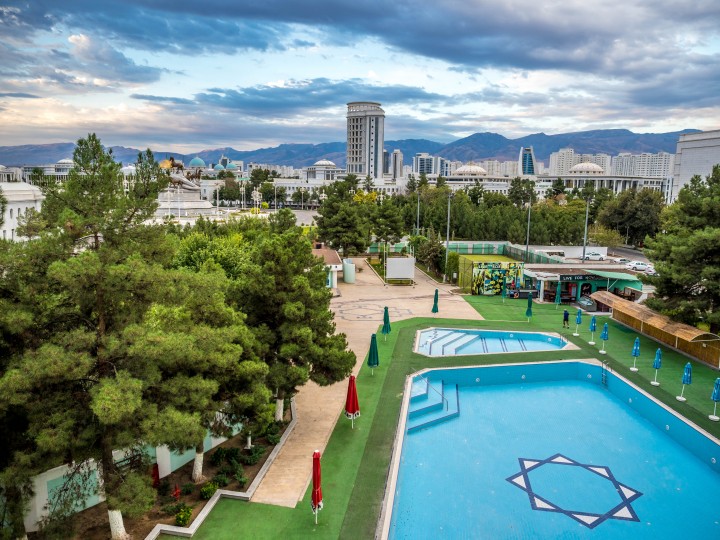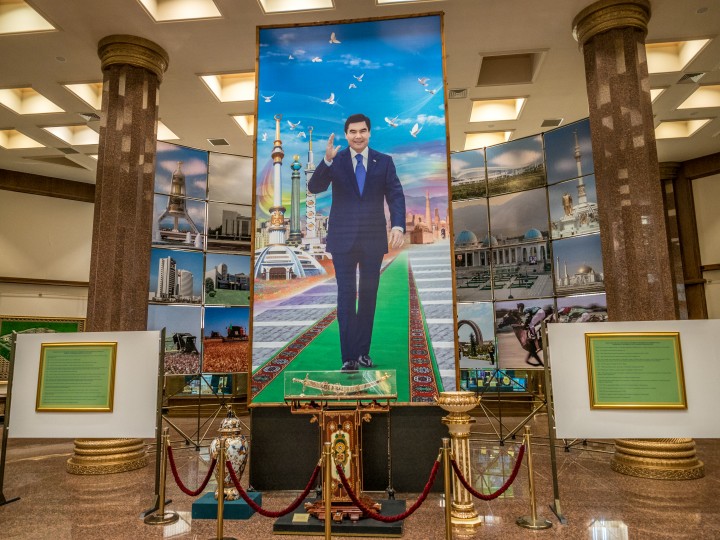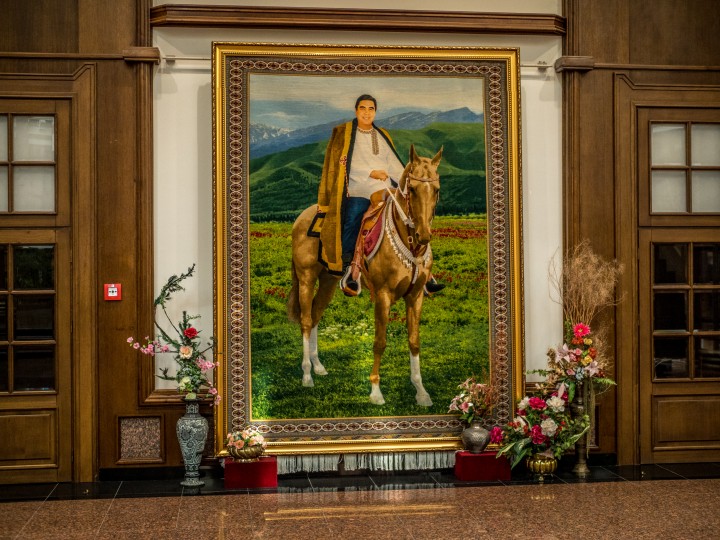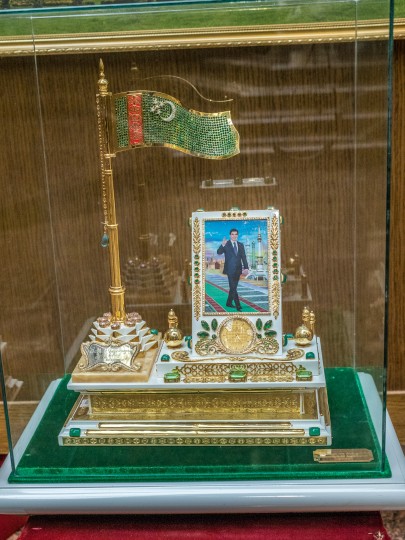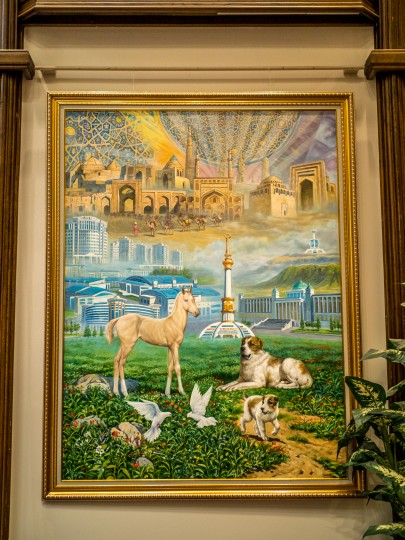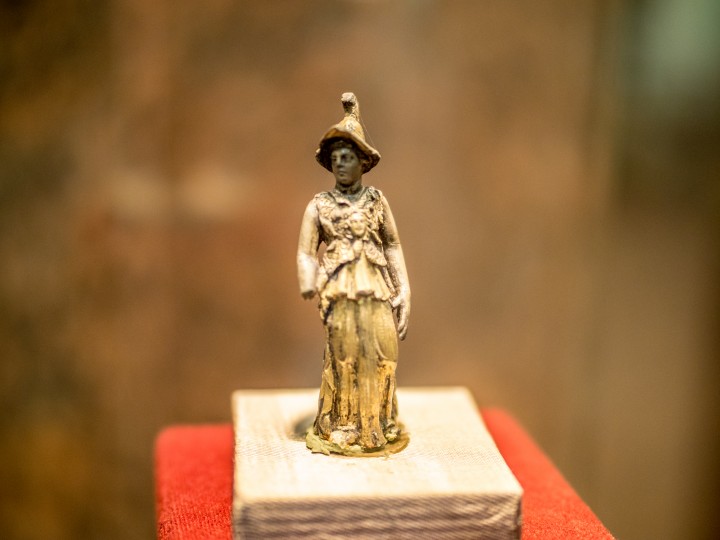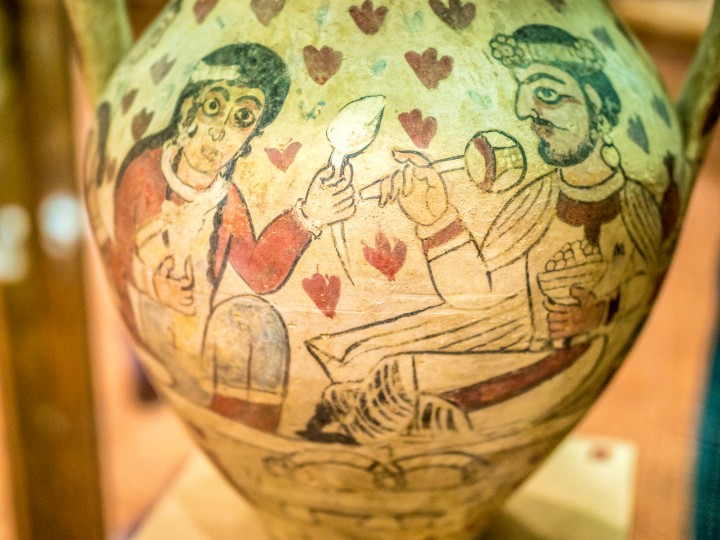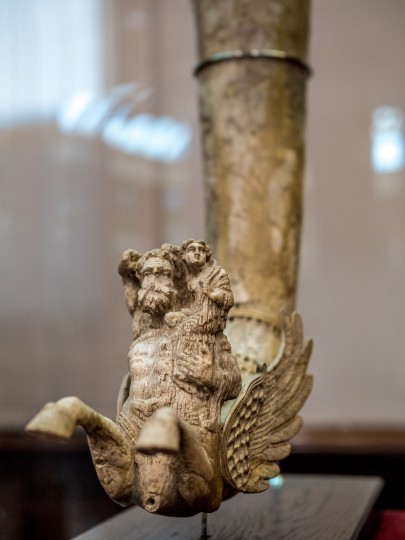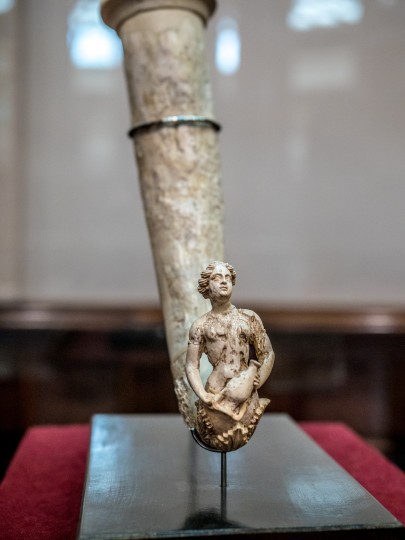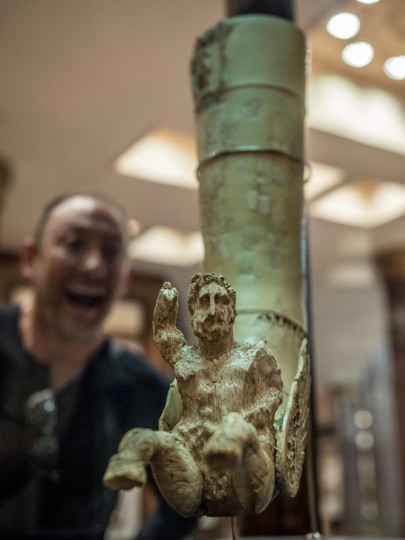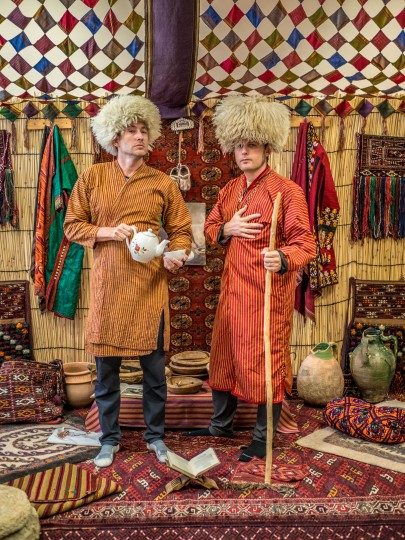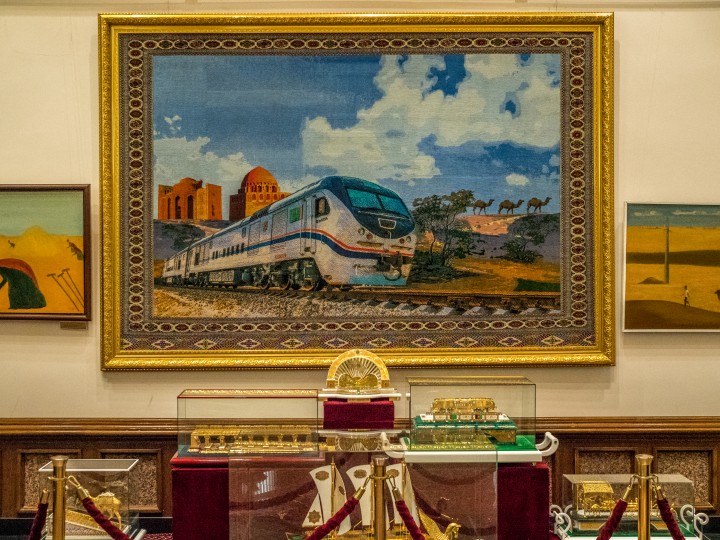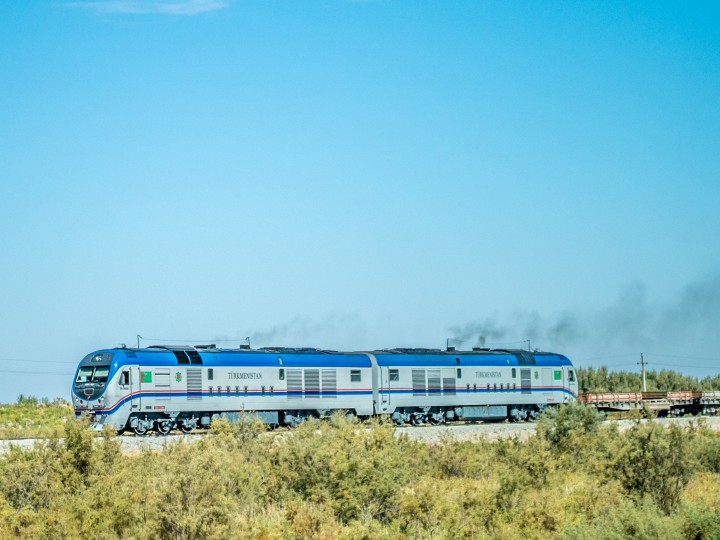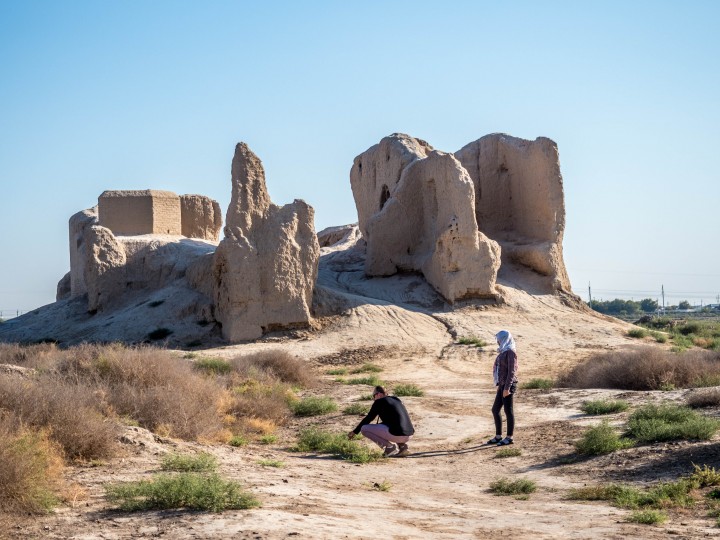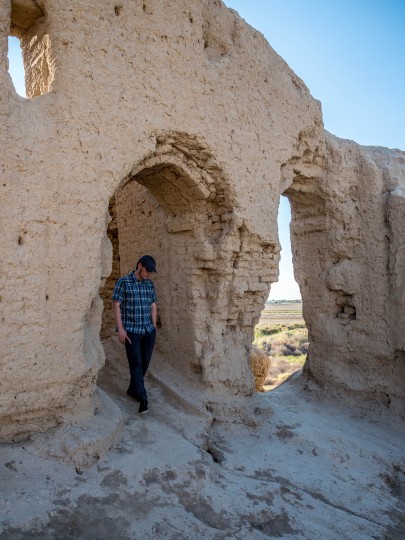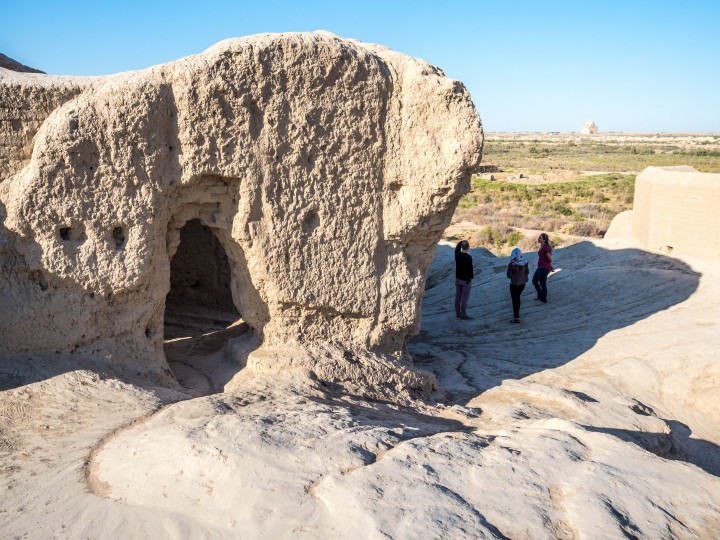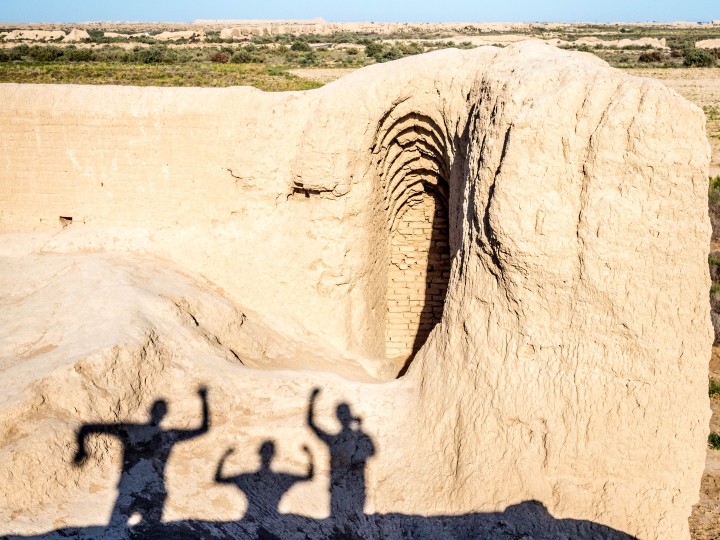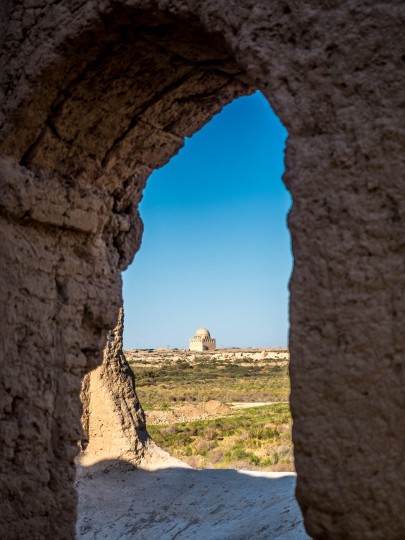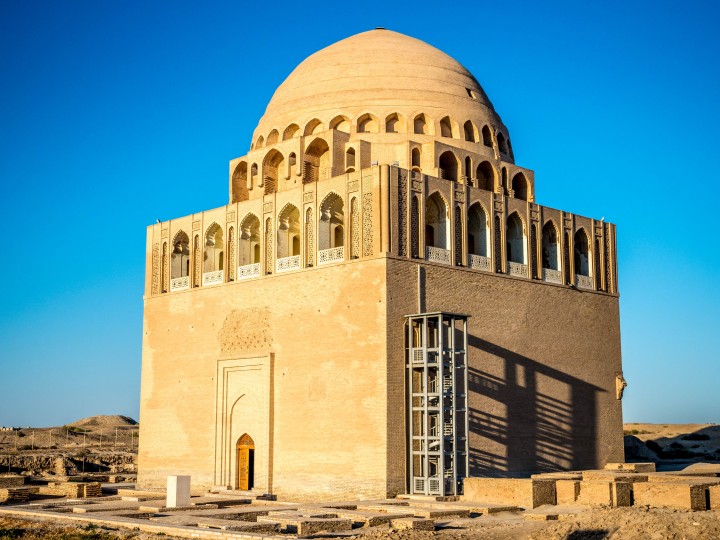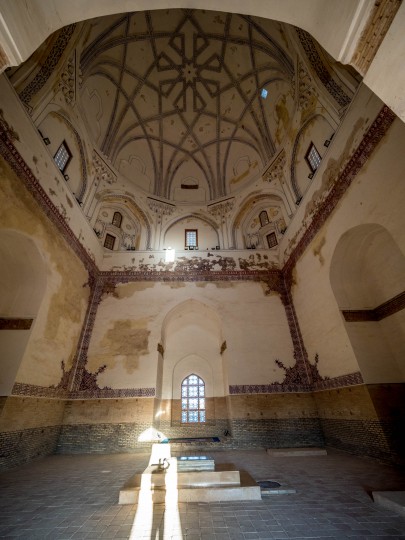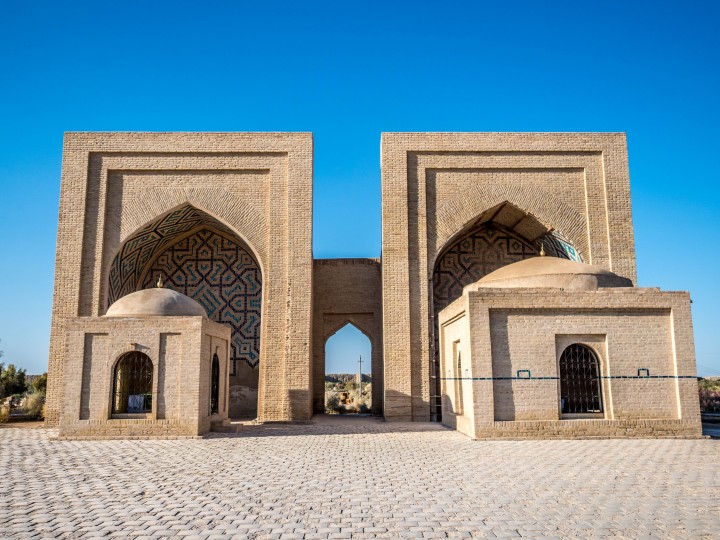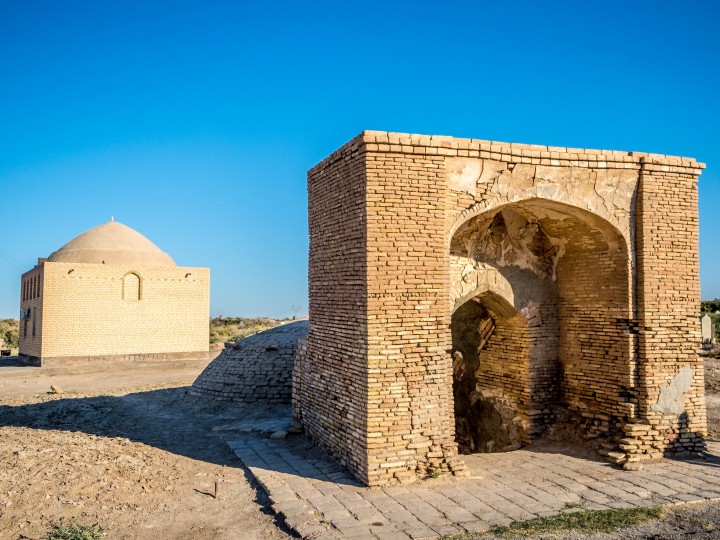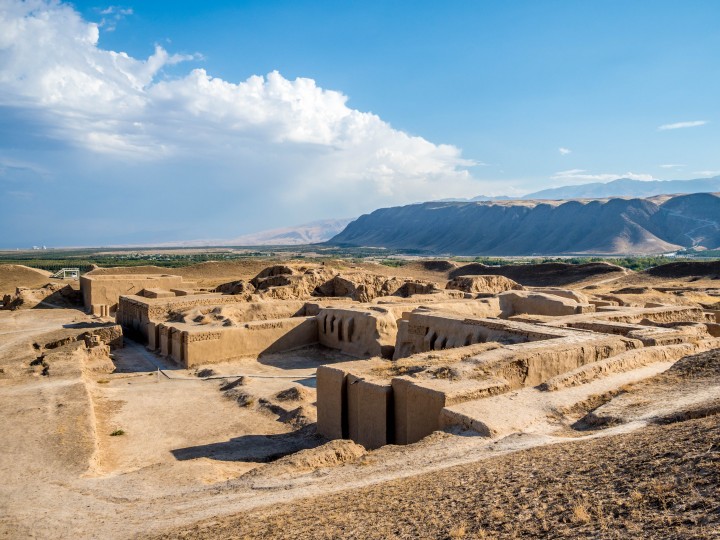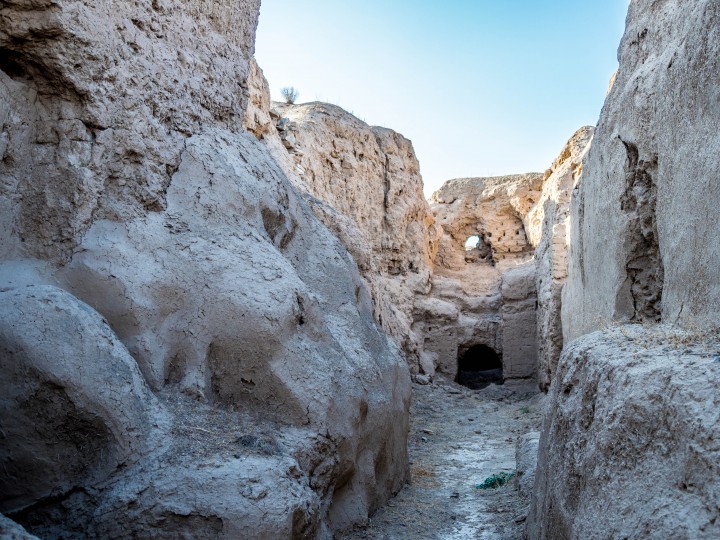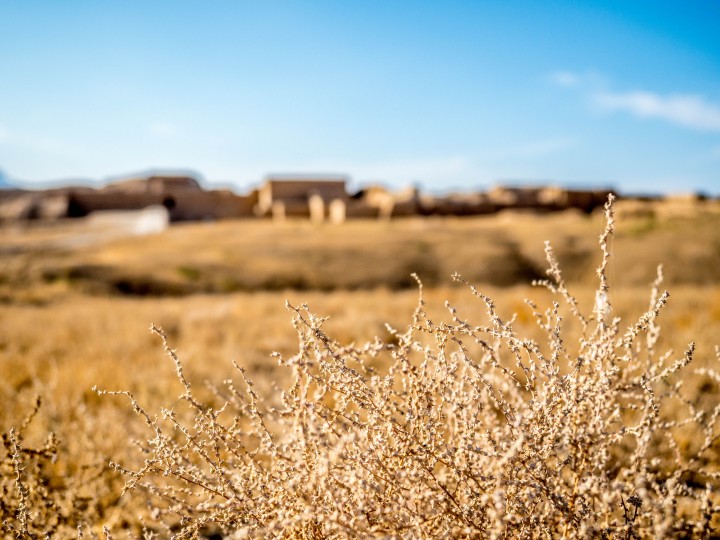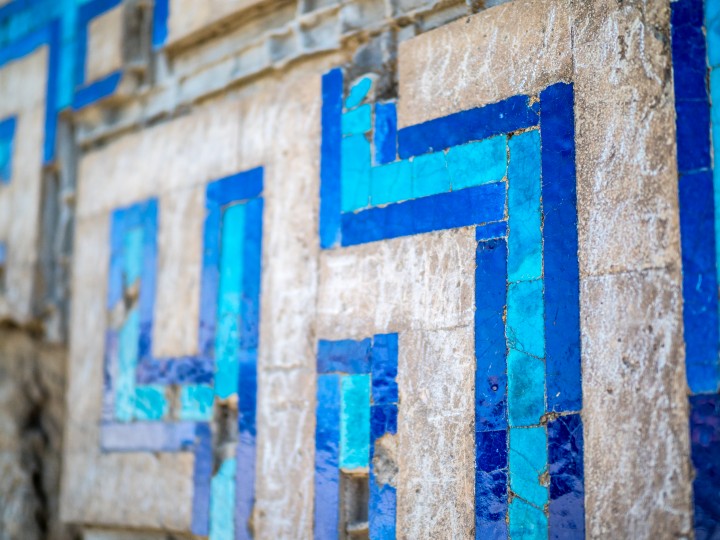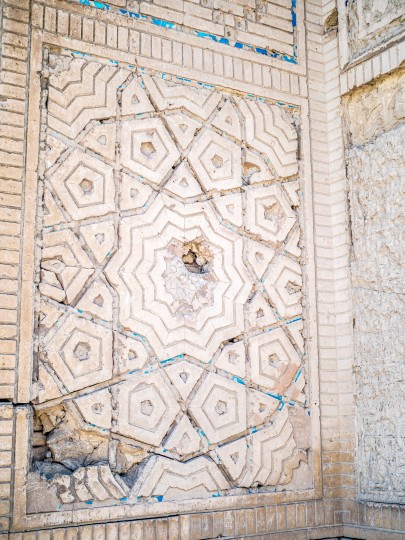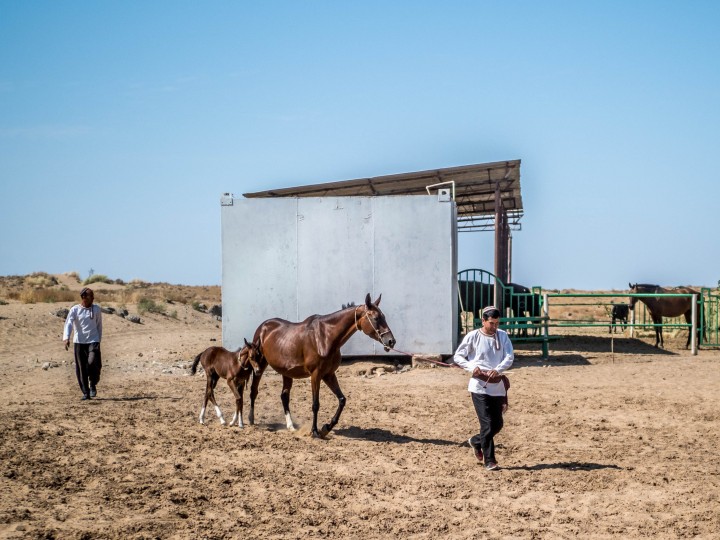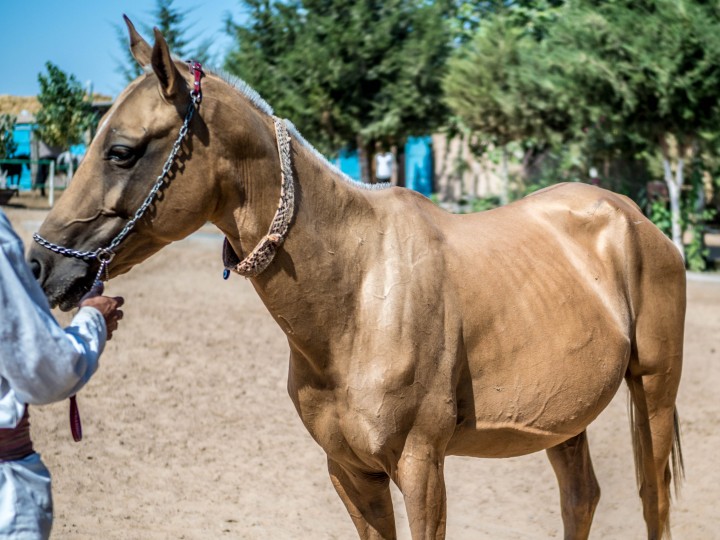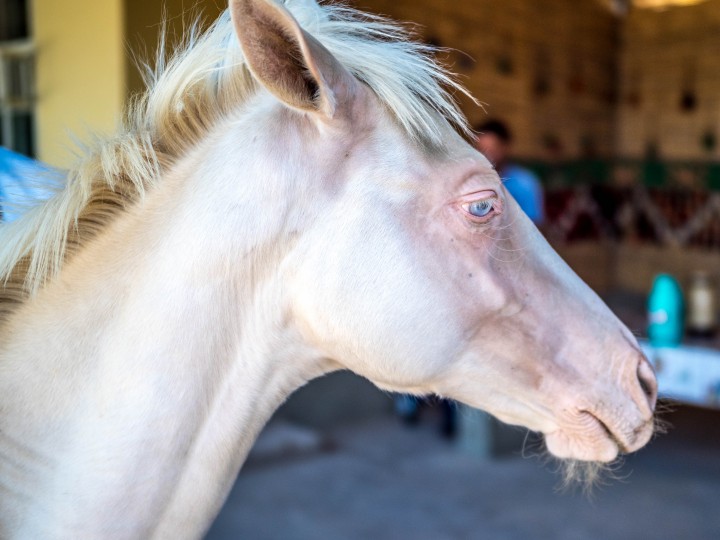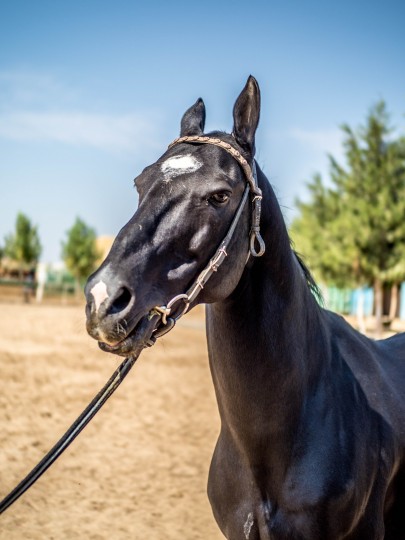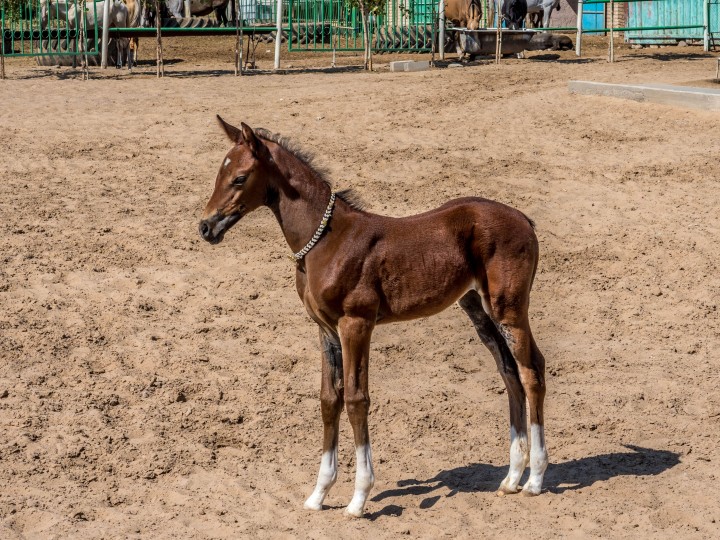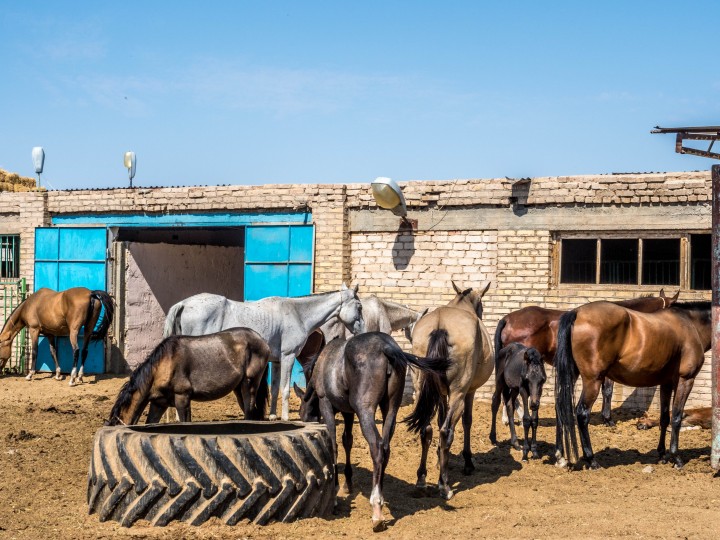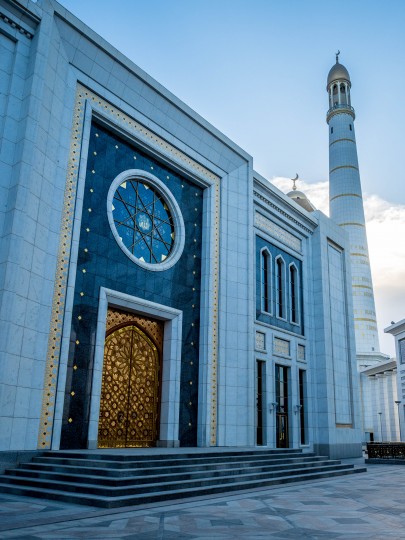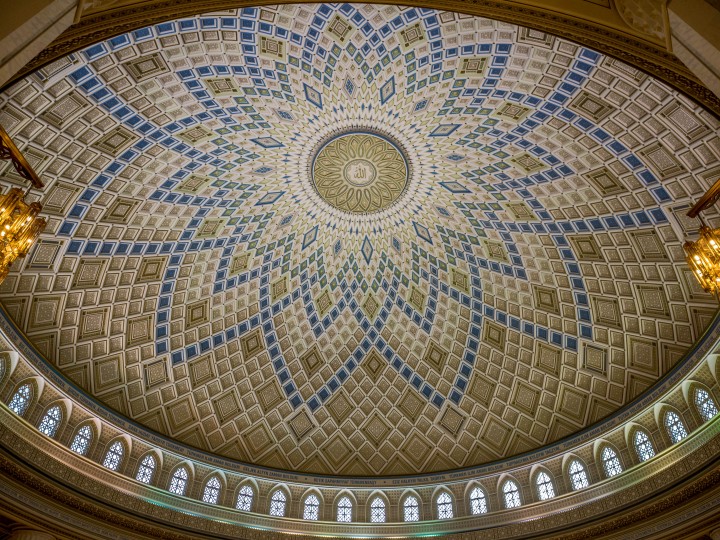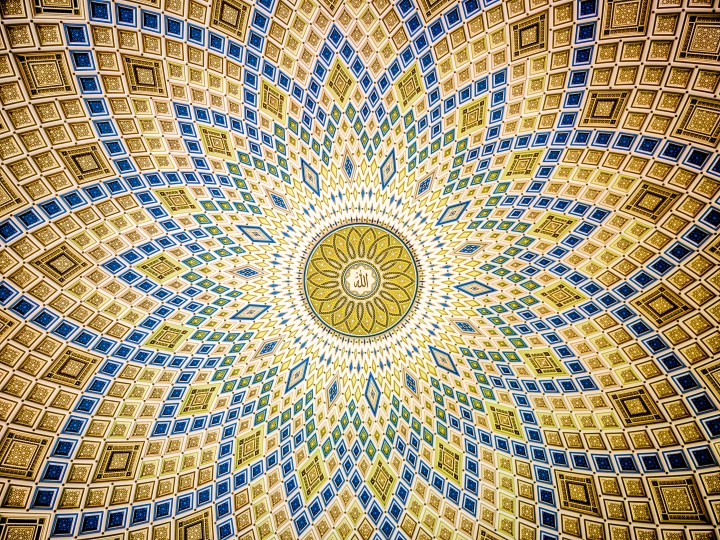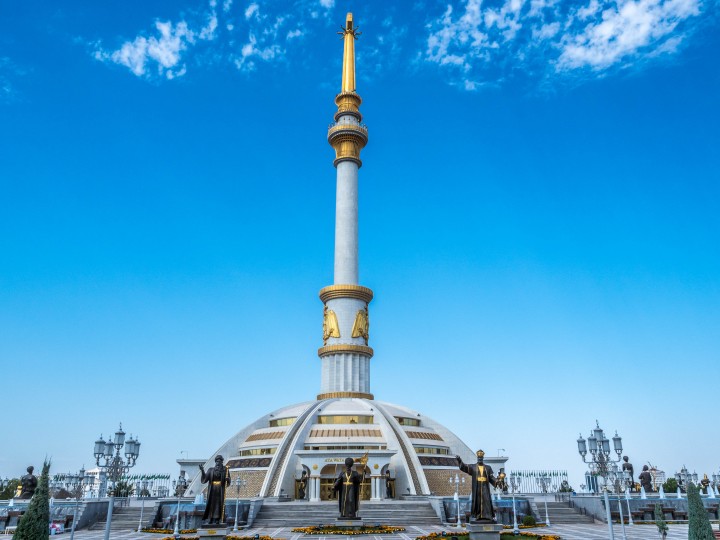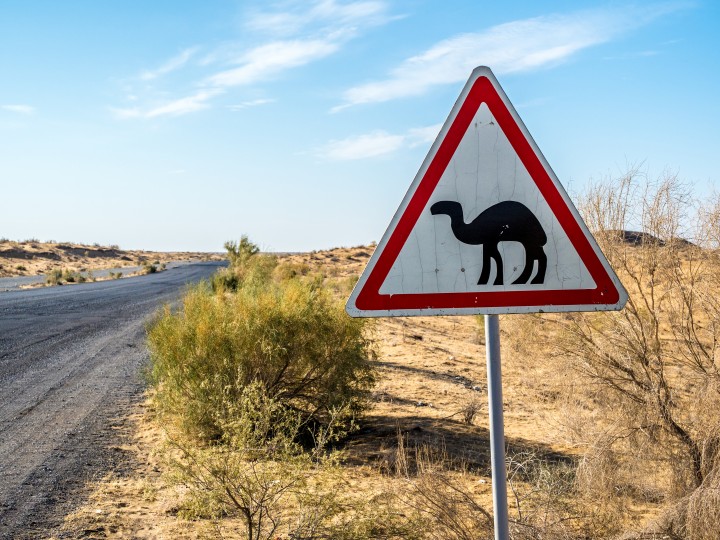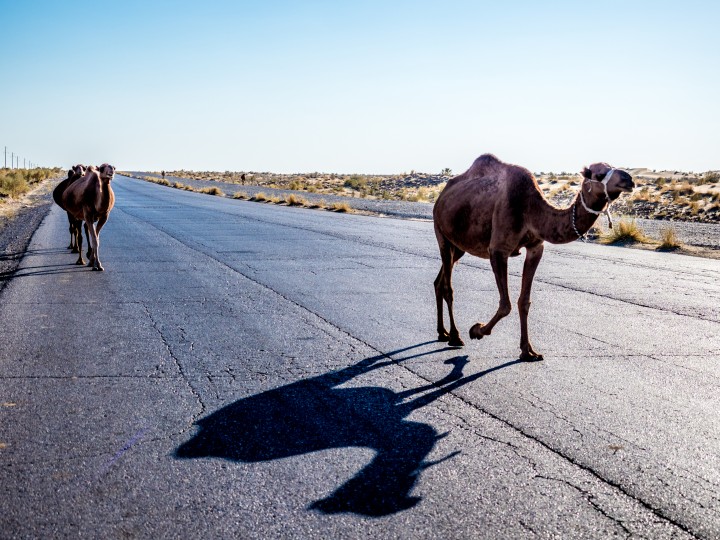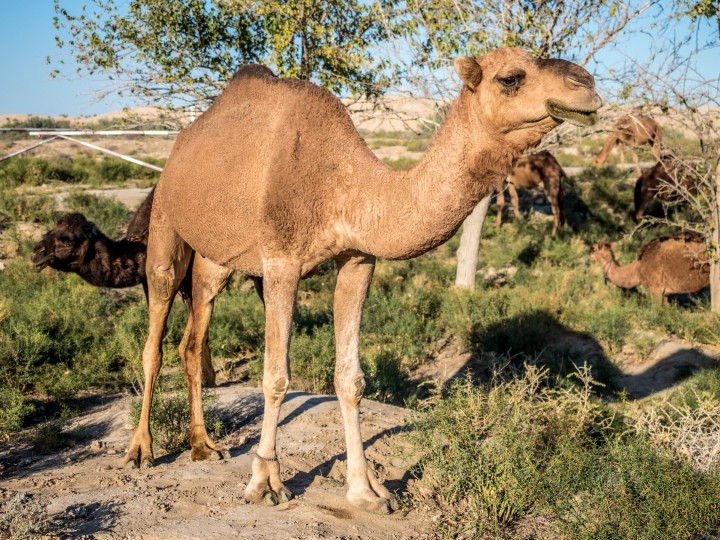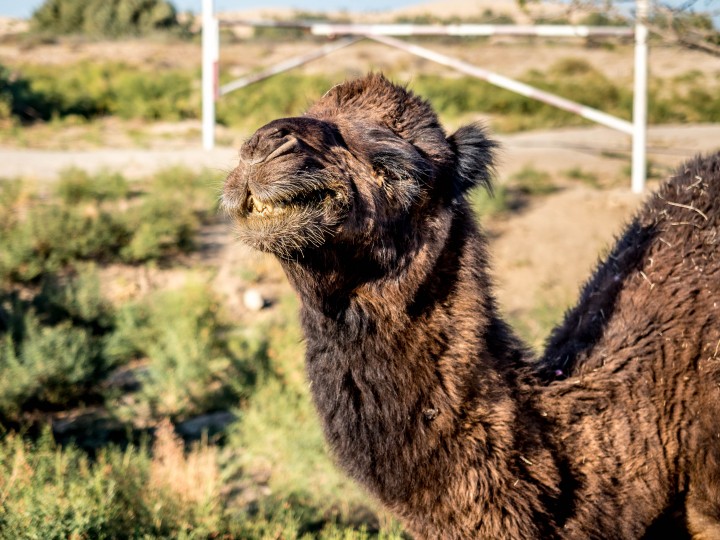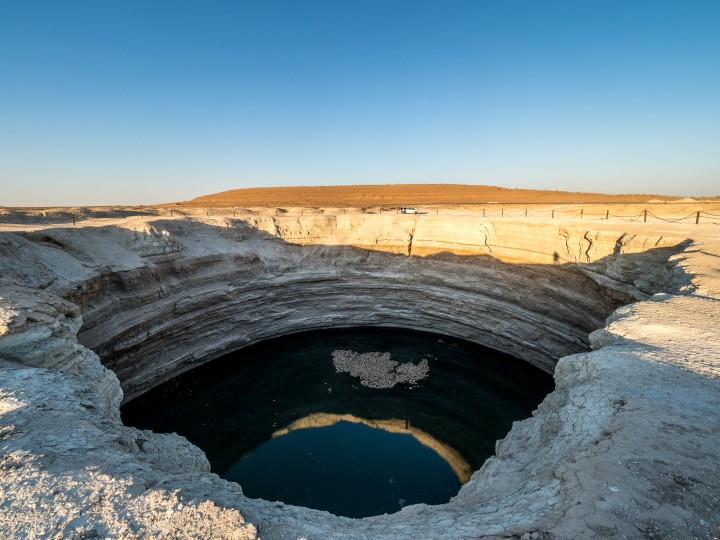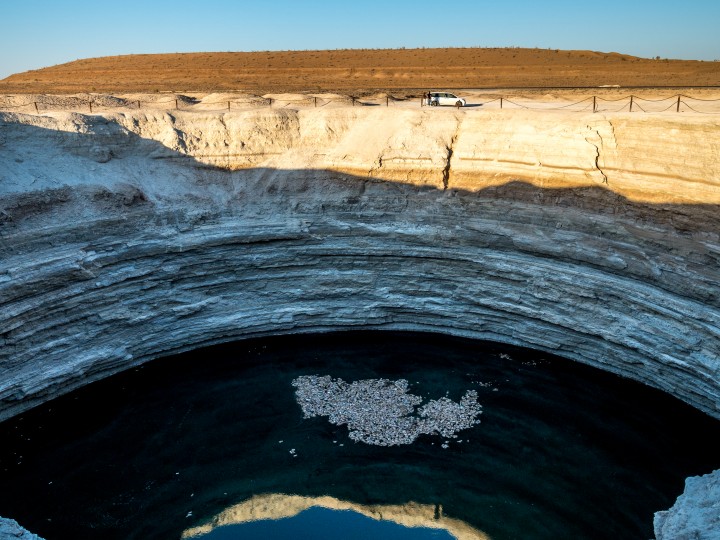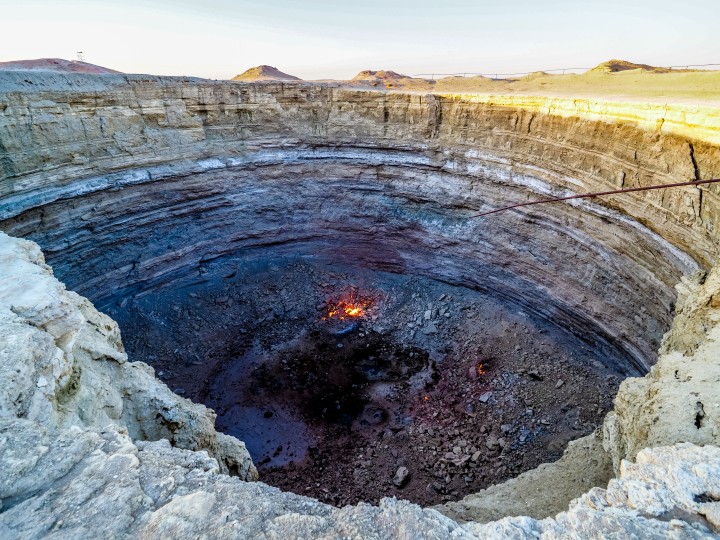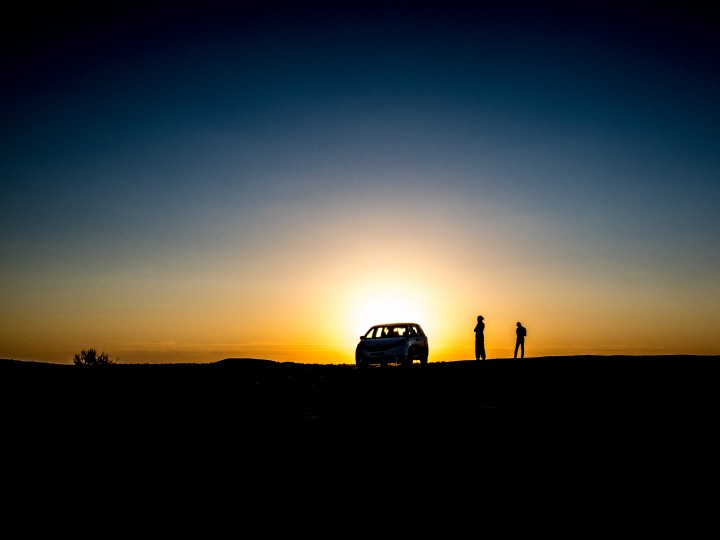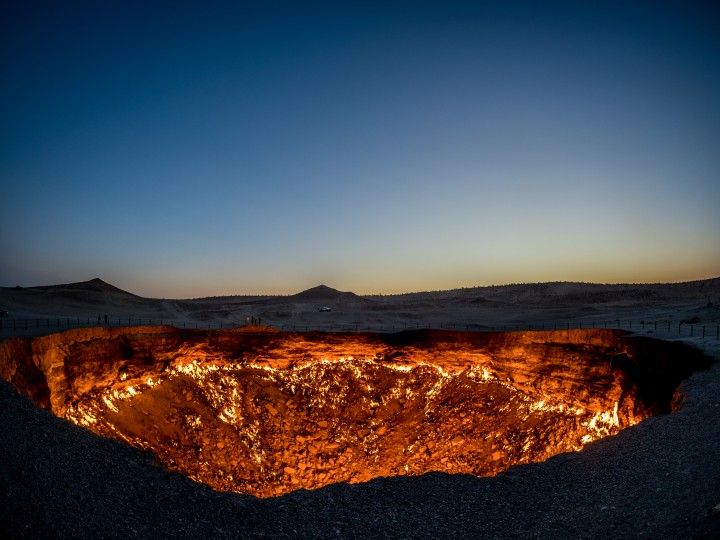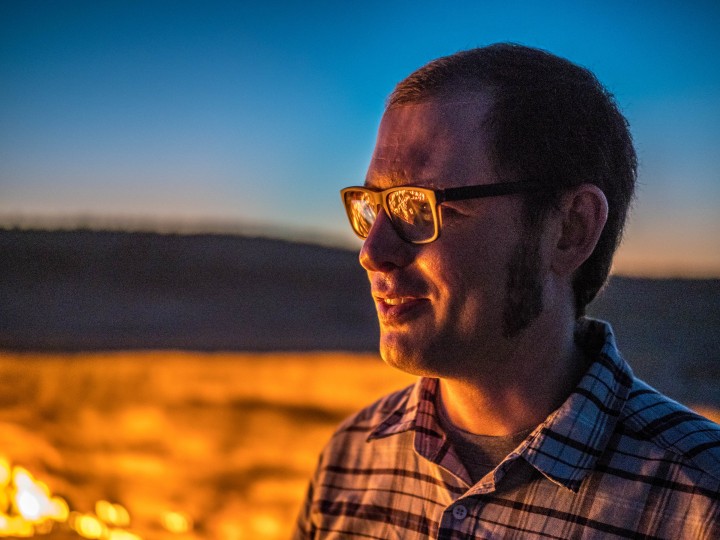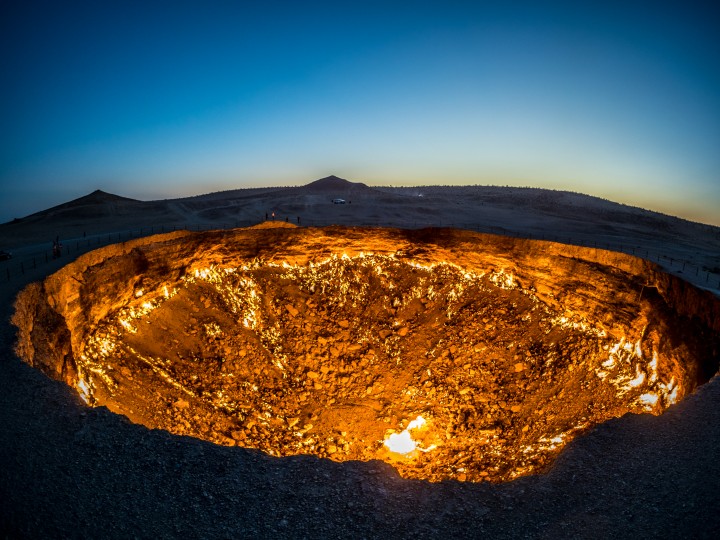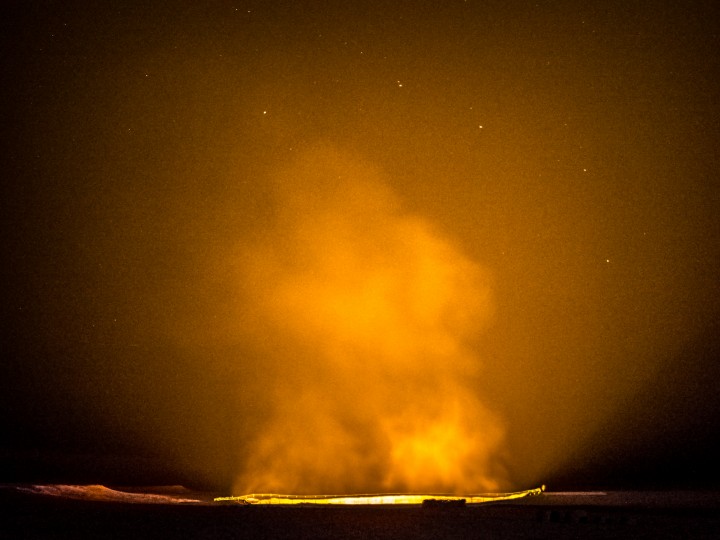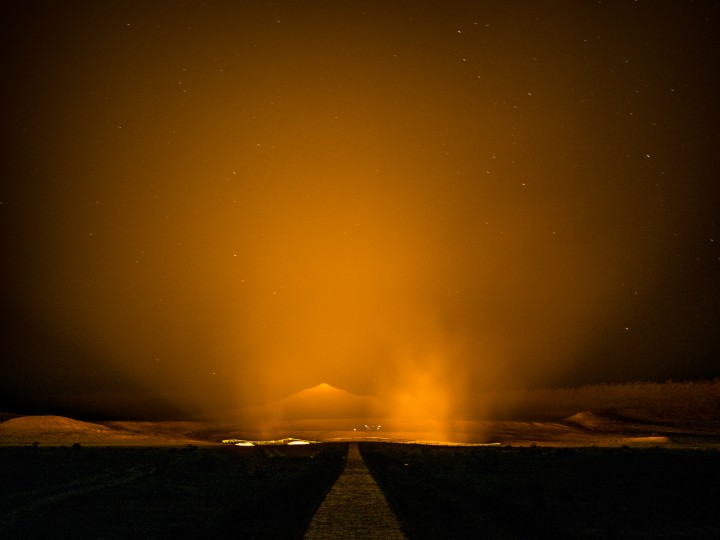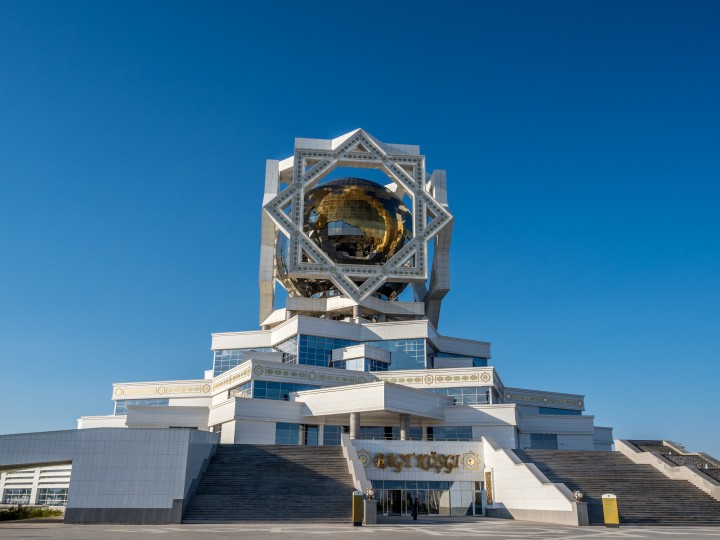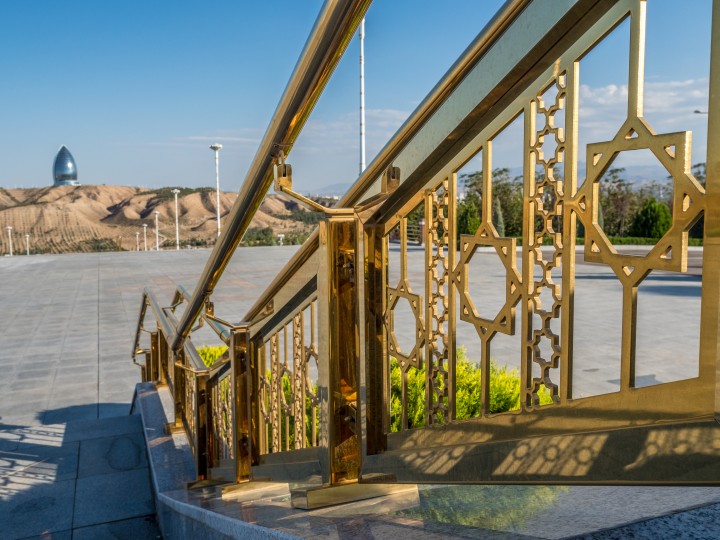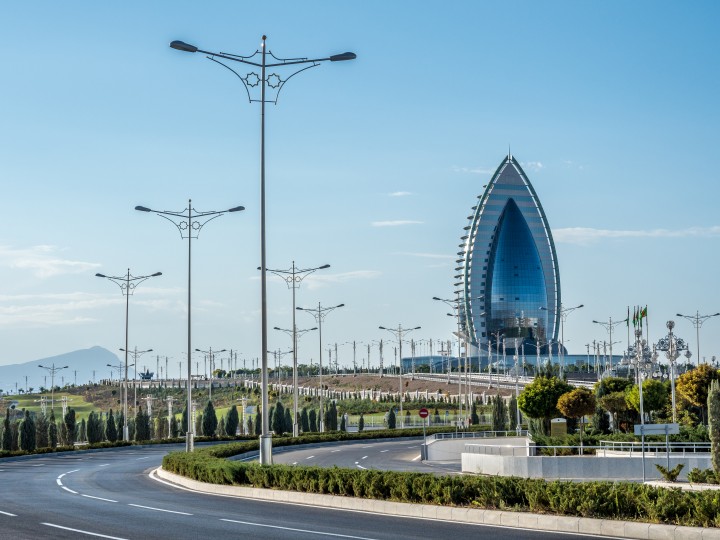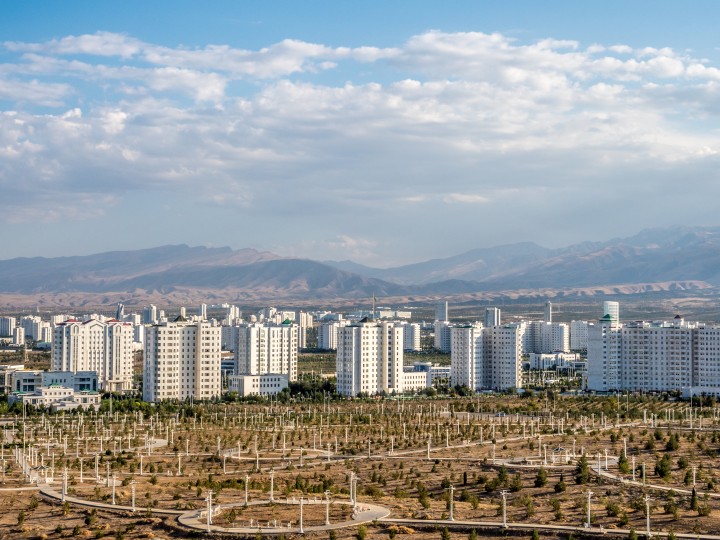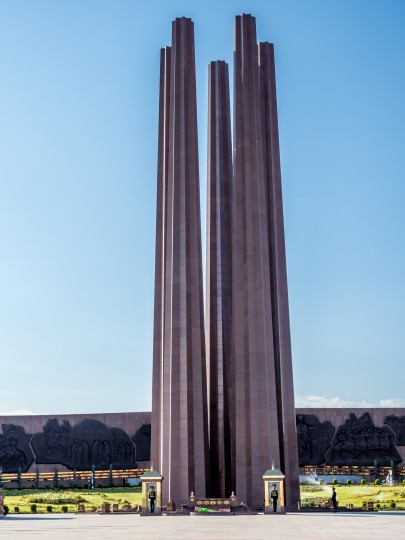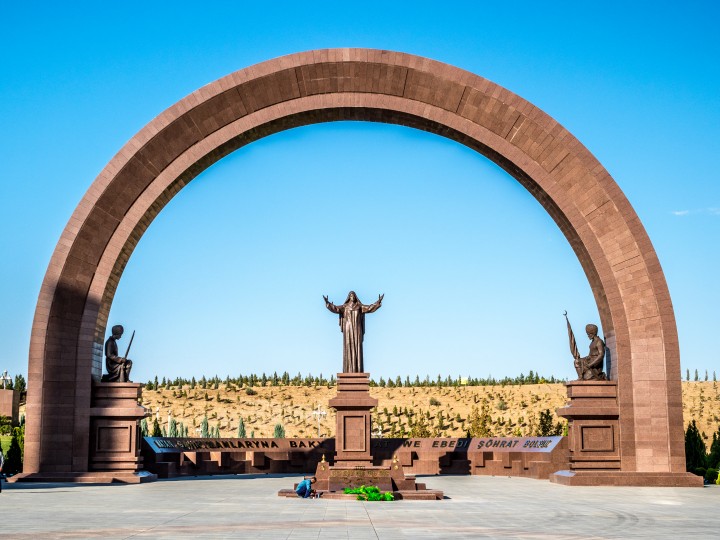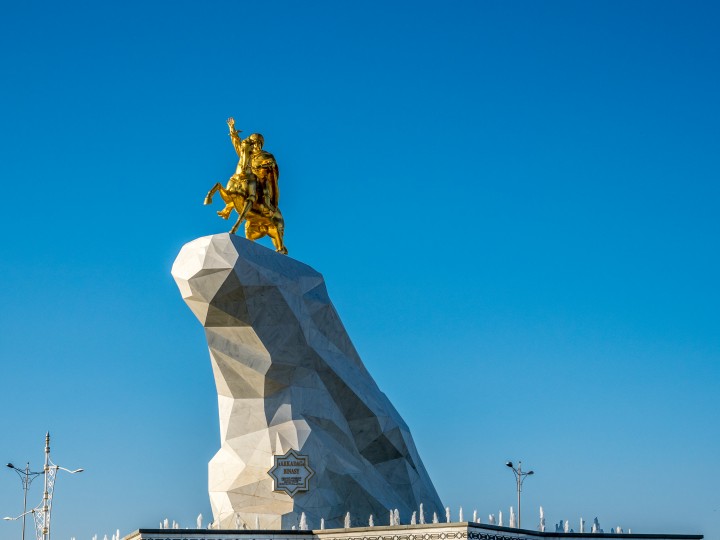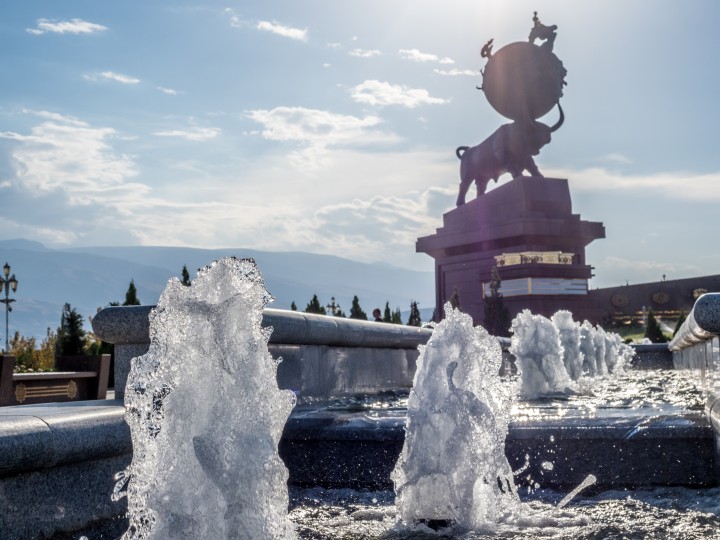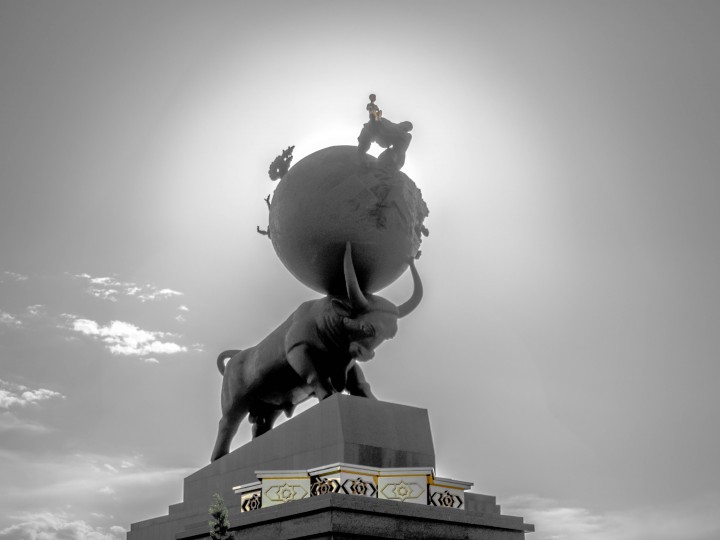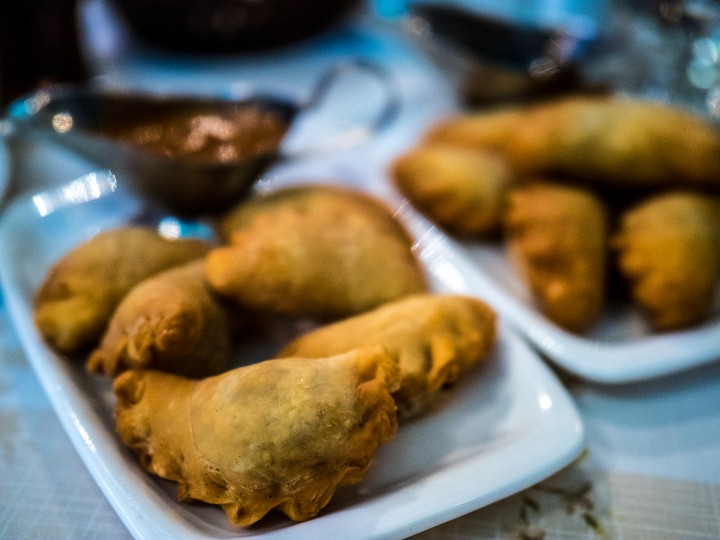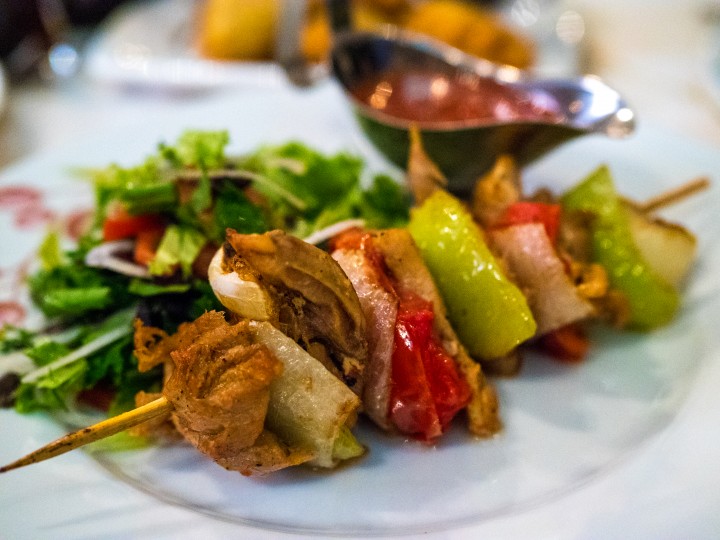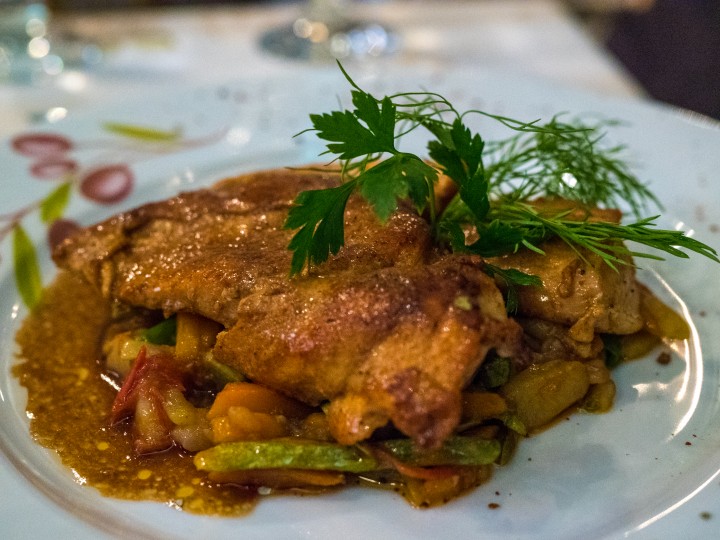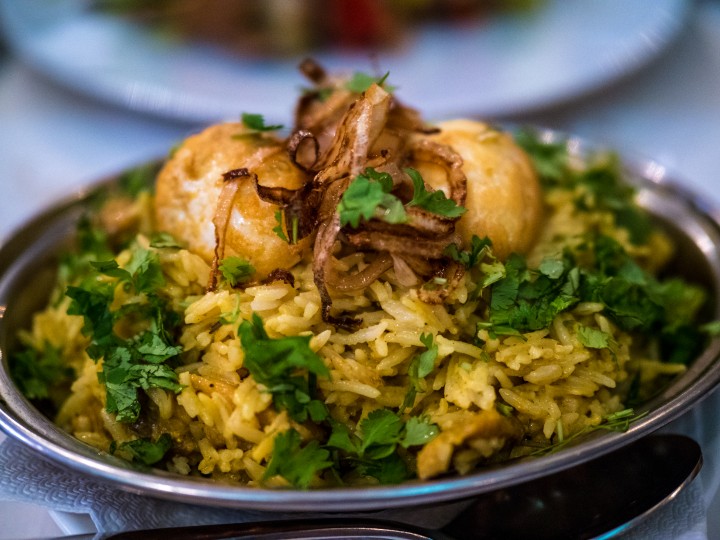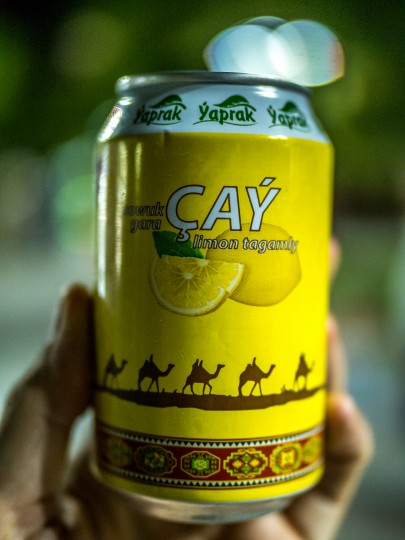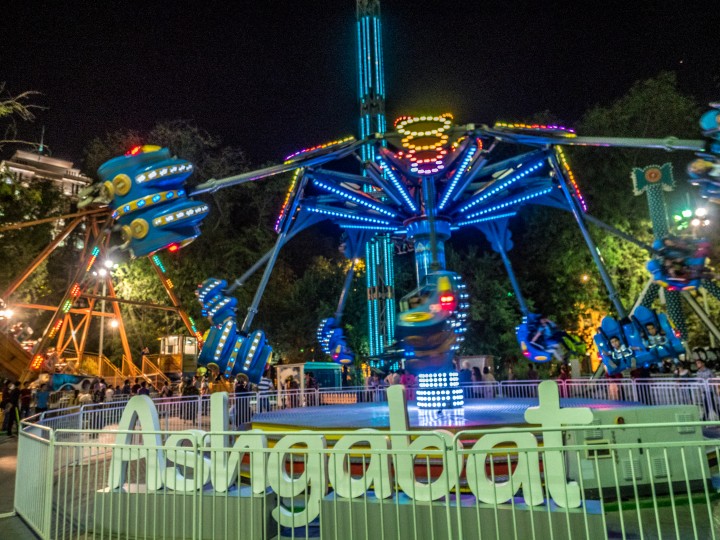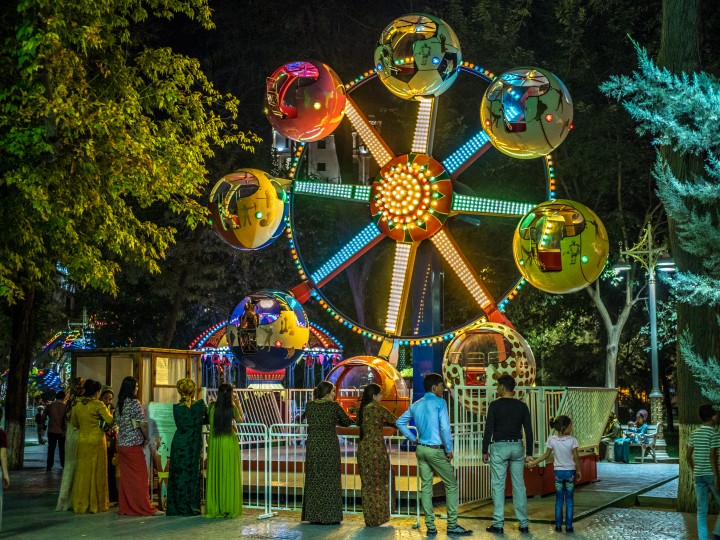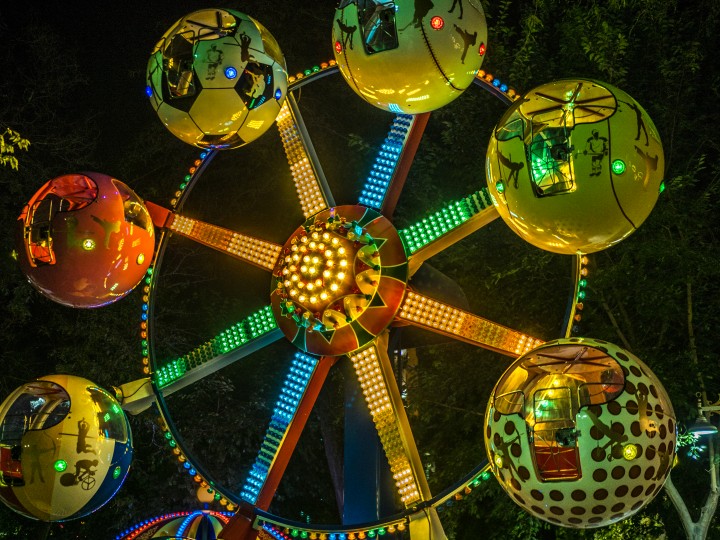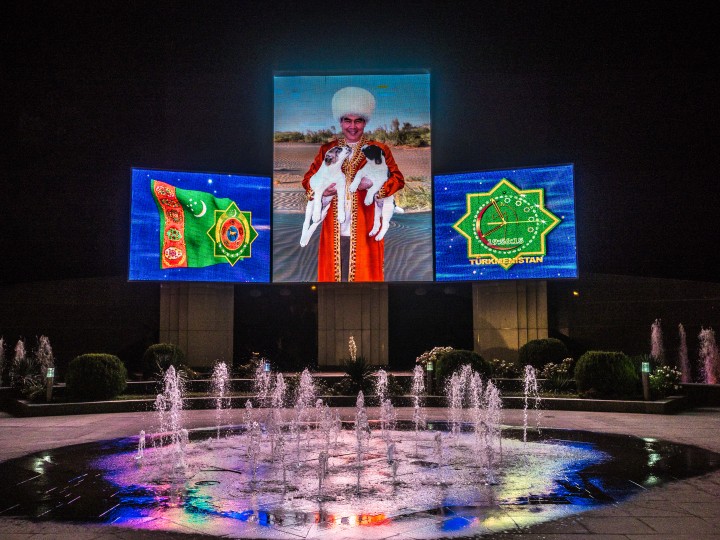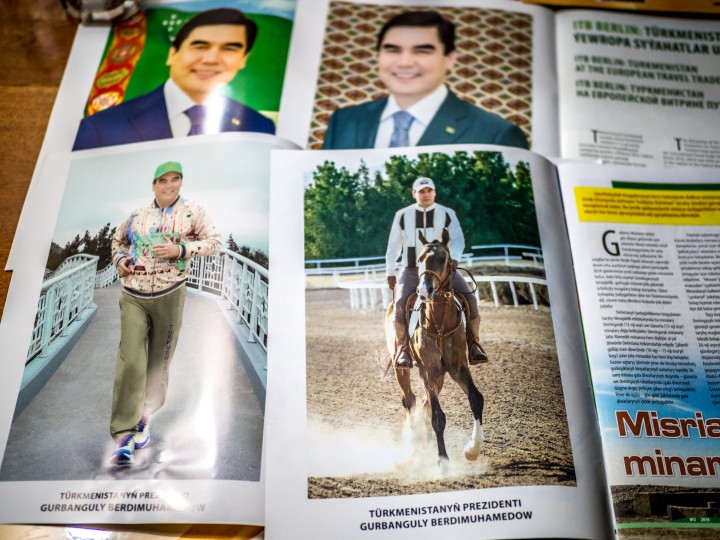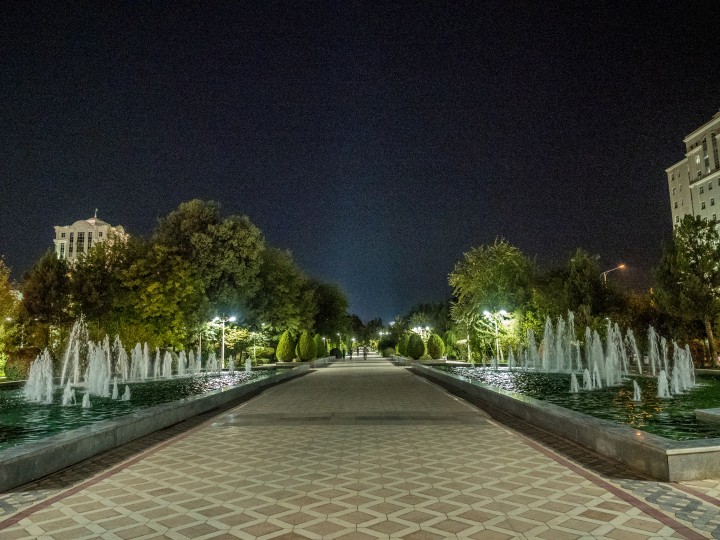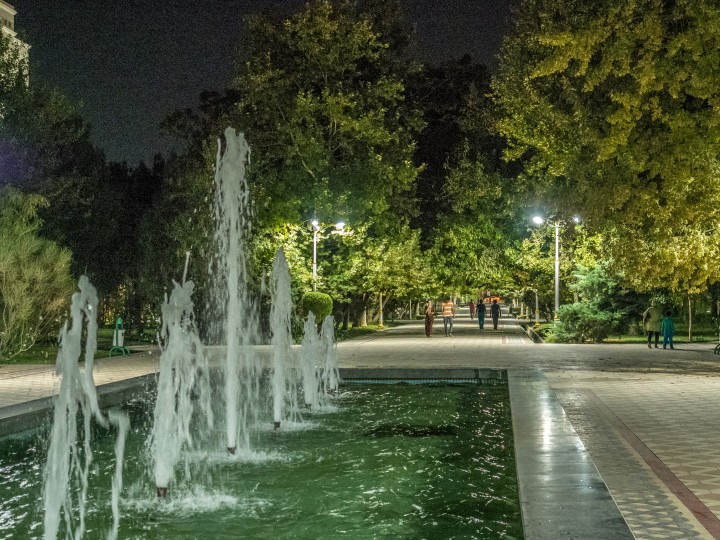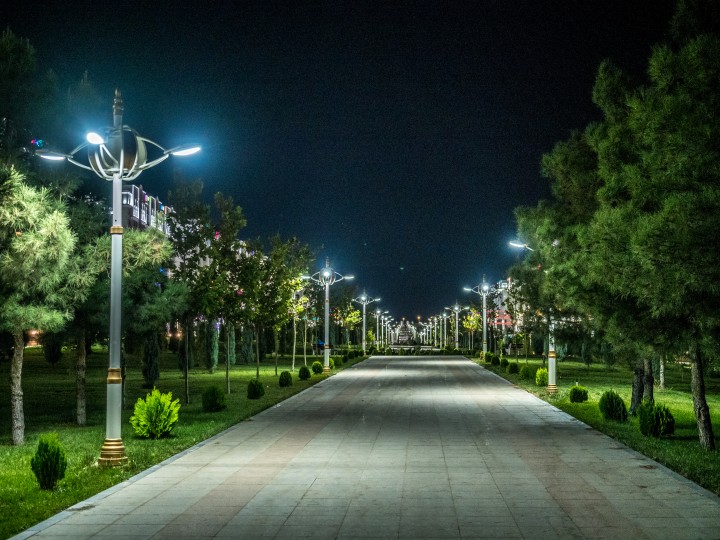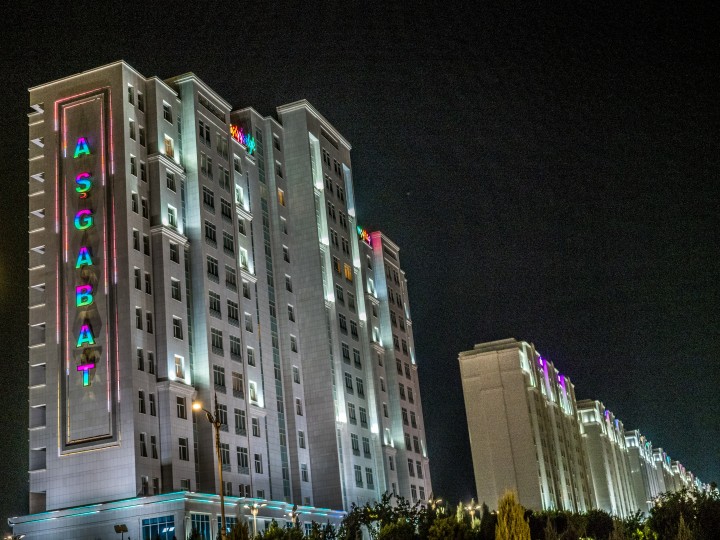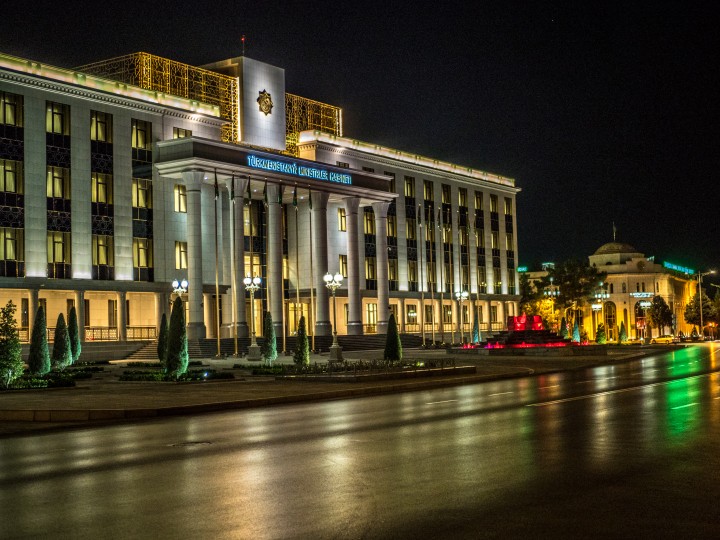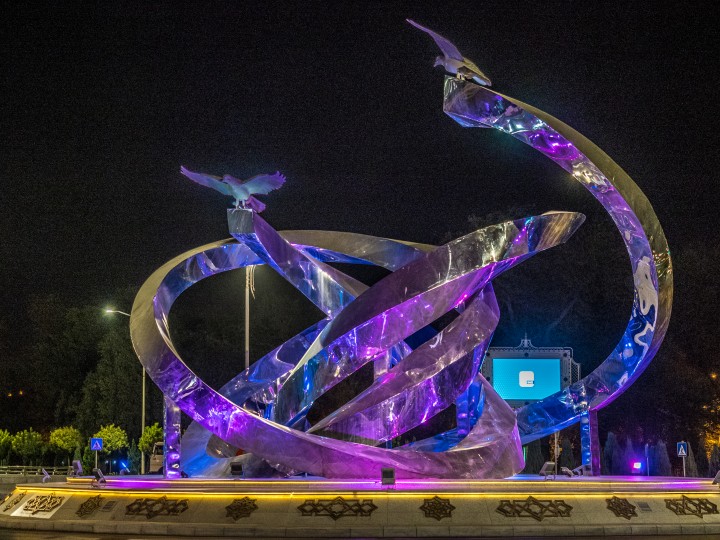A few days closing out our 5-stans tour of Central Asia
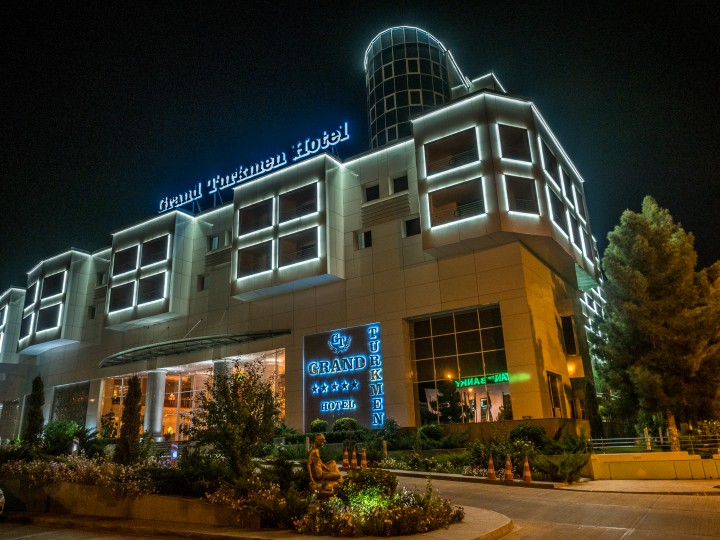
The "Grand Turkmen" is yet another ex-Sheraton that lost their branding. This one is far worse than the Tashkent hotel. Everything falling apart, pool empty, facilities left to decay, elevators sound like a death trap. Police patrol all around the building 24/7.
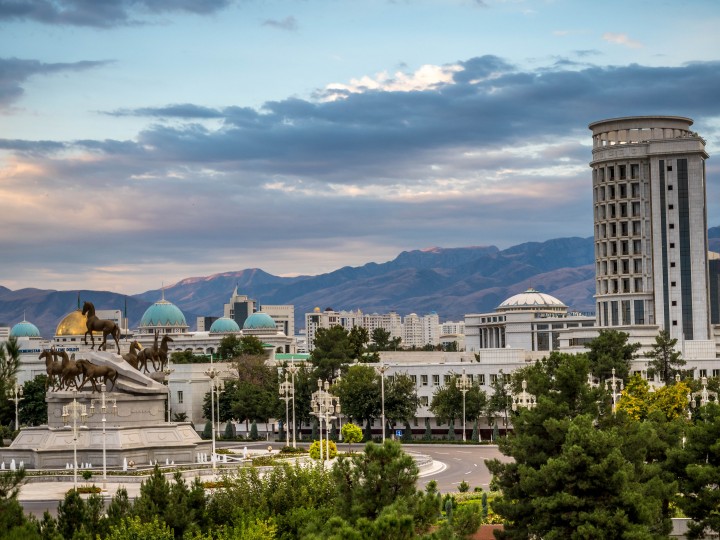
Nice, albeit eery view from Grand Turkmen balcony. Many roads have minimal traffic, a bit reminiscent of North Korea
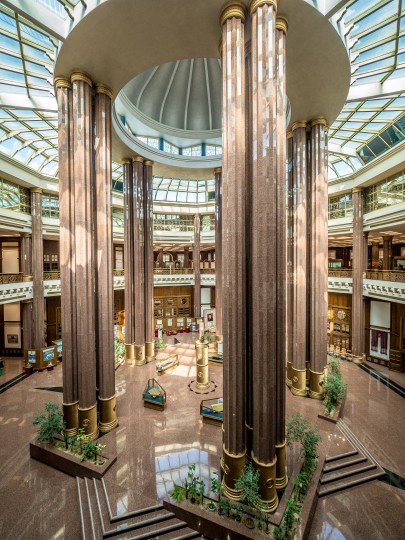
The National Museum. The propaganda in this country is interesting. They actually steer clear of telling you very much about their dear leader. In Turkmenistan's case, it's Gurbanguly Berdimuhamedow, who they refer to as "The Great Protector". This museum actually has an entire separate annex dedicated to the president, but they act twitchy about you seeing it. It's almost like they know it's a joke and don't want to give you the chance to be entertained by it. So instead, they take you through an exhaustive and mostly typical collection of historic artifacts.
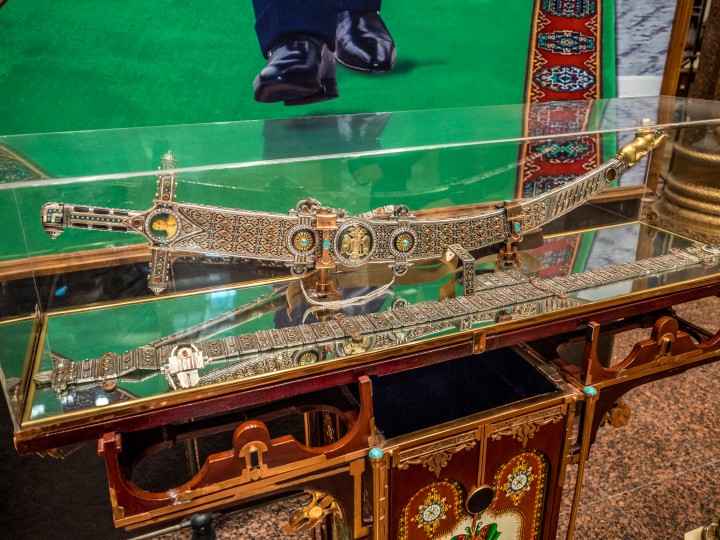
This sword can not be removed from it's sheath, an apparent reference to Turkmenistan's stated neutrality as a country. But just in case, their military and police do have guns that fire.
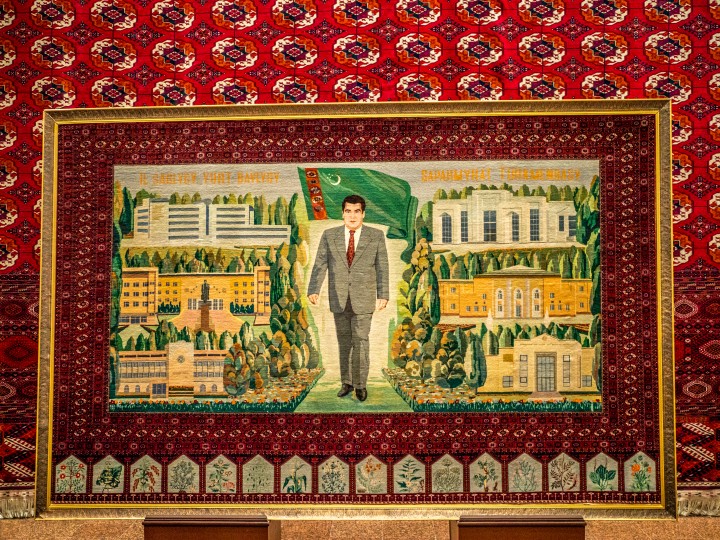
The original post Soviet president of Turkmenistan from 1991-2007 (died of natural causes). He changed his name to "Turkmenbashi", which translates to "Leader of the Turkmen". He took being in charge quite seriously.
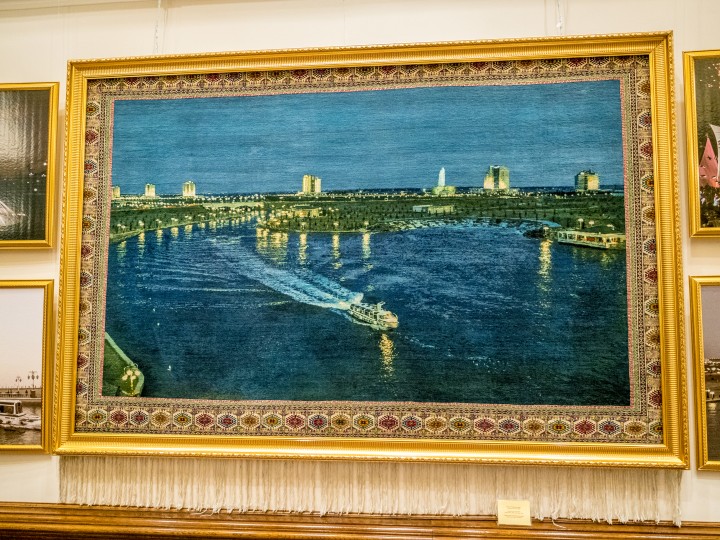
Pretty amazing silk rugs on display here. Unfortunately, the silk carpets that they actually sell are not even remotely close to the caliber of those sold in neighboring countries like Iran, Uzbekistan, and Afghanistan.
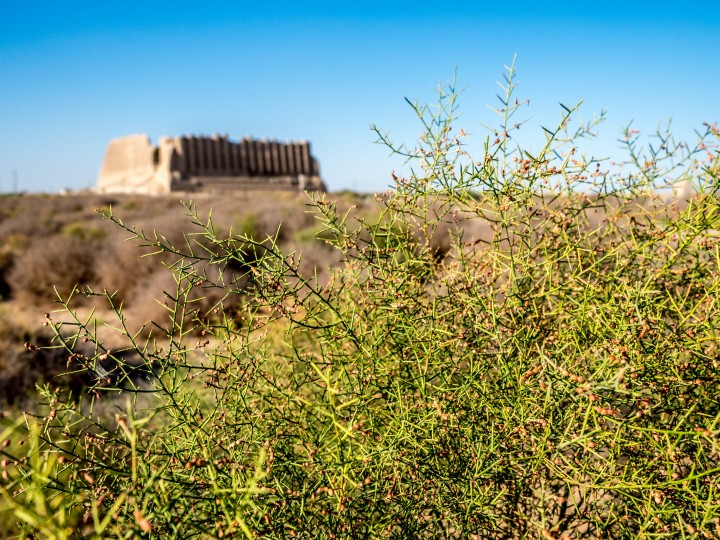
Merv is an ancient city with a number of ruins and archaeological sites. We toured here on our arrival day.
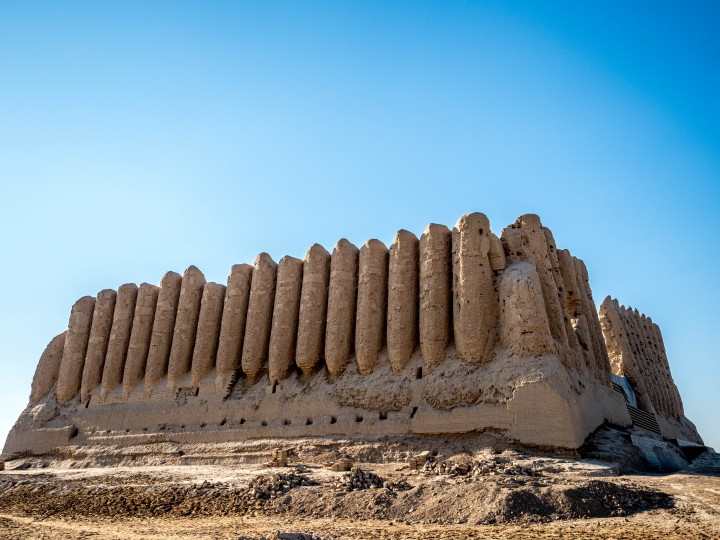
Legend has it Merv ceased to exist after it was invaded by Tolui Khan, a son of Genghis Khan. After refusing to pay taxes to the Mongols, the fort was attacked. When the people attempted the surrender peacefully, Tolui had each and every citizen of Merv executed.
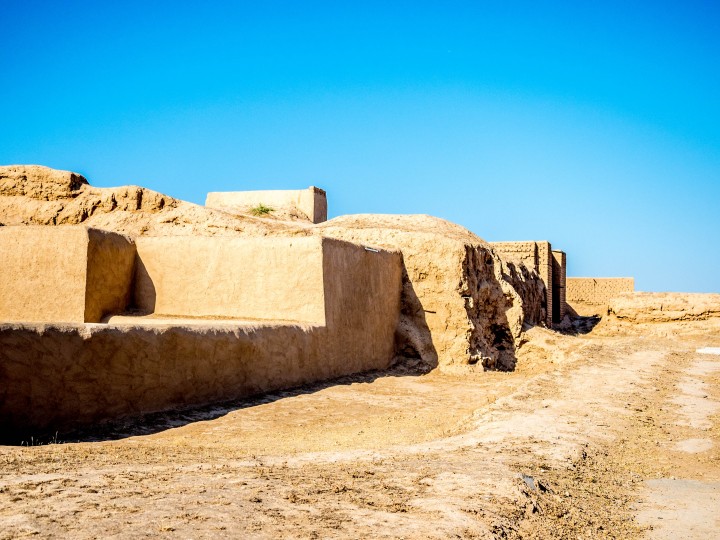
Ancient trading fort of the Parthian Empire from 200 BC. Famous for its Ancient Greek artifacts and ivory rhytons.
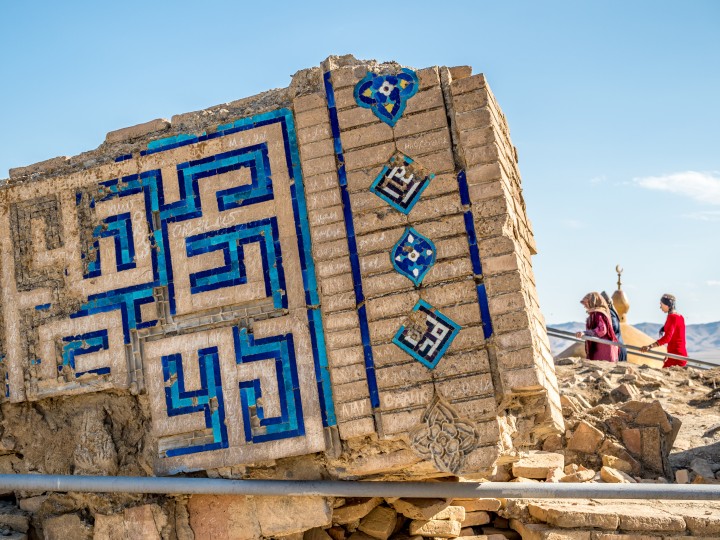
Mosque in Turkmenistan once famous for depicting dragons. It is now a pile of rubble after the mosque was destroyed by an earthquake in 1948
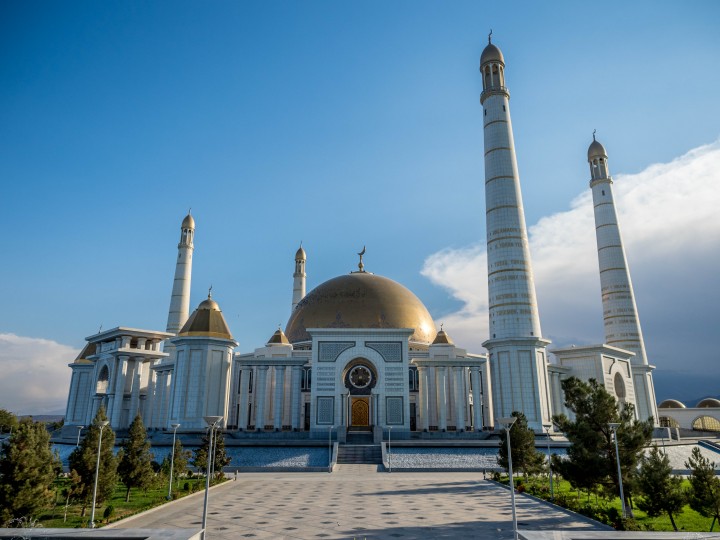
Mosque/Mausoleum built by first president of Turkmenistan for himself. It is a controversial site because it features scriptures from both the Quran and the ex-president's own "guide to life" book.
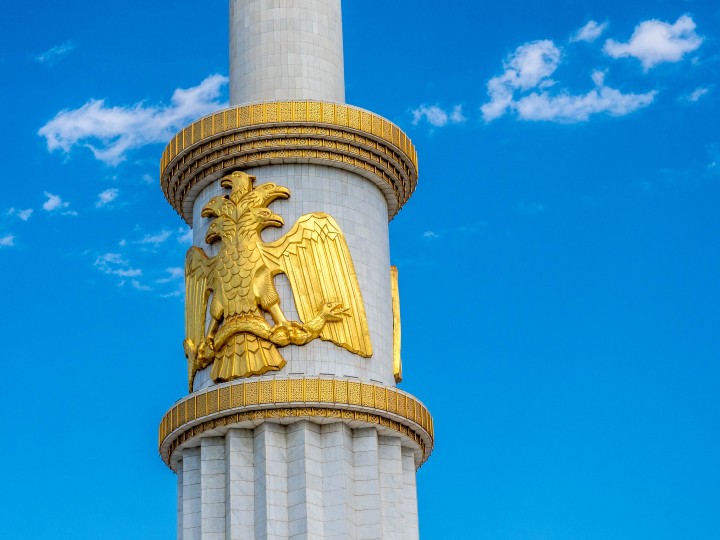
When the Soviet Union fell, Turkmenistan gained overnight (and unexpected) independence. Saparmurat Niyazov was the leader during soviet times, and remained in control after independence--replacing images of Lenin and Marx with those of himself. He then renamed himself Turkmenbashi (leader of all Turkmen) and erected rotating golden statues of himself to always face the sun. Many of these have been removed by his successor, allegedly his illegitimate son.
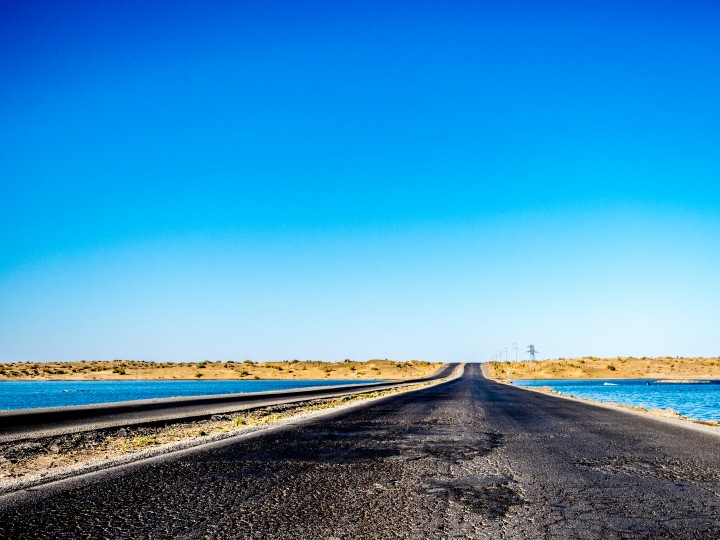
Roads in Turkmenistan are decent quality, but frequent police checkpoints and conservative speed limits still slow down transit times
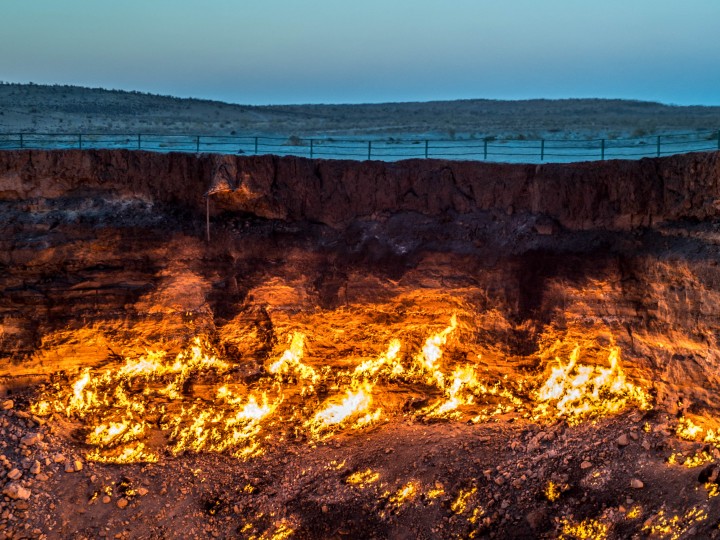
Known as the "Gates of Hell" this site has a curious history. The site was initially identified by Soviet geologists in 1971 as a potential oil field site. Instead, it was a natural gas pocket which collapsed with the placement of a drilling rig. Due to fear of methane gas spreading the nearby villages, the site was set on fire to burn off the poisonous fumes over a couple of weeks. Forty plus years later, the fire still rages with intensity!
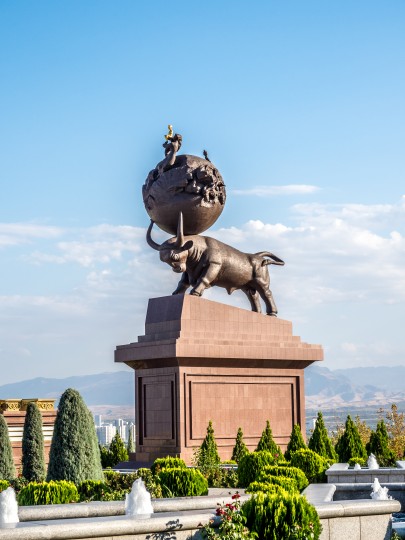
Earthquake Memorial to the quake of 1948 that destroyed most of Ashgabat. According the our guide, Turkmen legend says the Earth is balanced on the horns of a bull. When the bull has to readjust this balance and shifts the Earth slightly an earthquake occurs. Curiously, this memorial also depicts President Turkmenbashi as a golden child atop the earth.
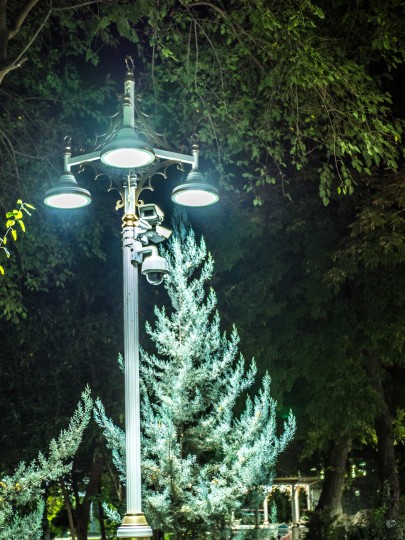
Don't complain too loudly or act out, because you're pretty much always being monitored.... by... someone.
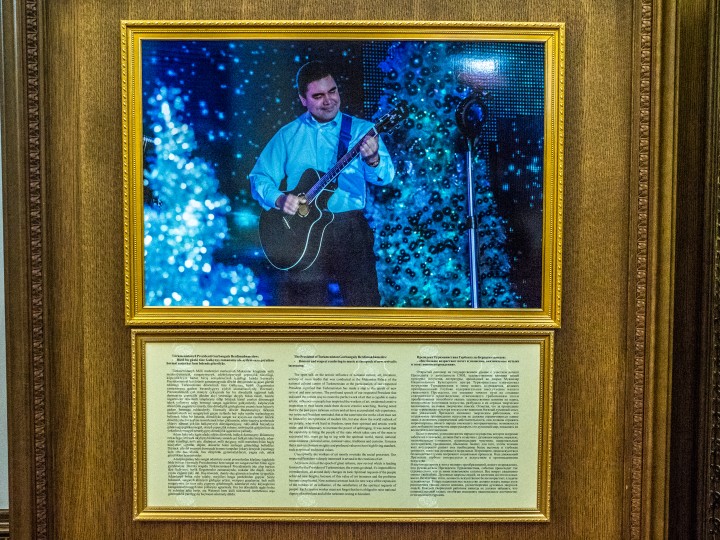
Dear leader is also the most talented musician.... ANYWHERE. Don't you dare look up Youtube videos showing that his guitar playing is fake.
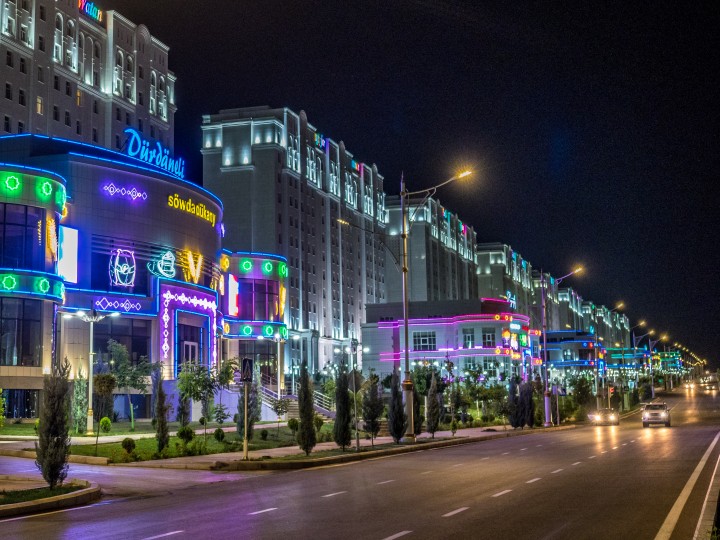
During the daytime, these buildings are all completely nondescript, white marble. They look sterile and devoid of any human touch. In the distance are apartment high-rises. Otherwise, these buildings each have shops of specific categories of goods (electronics, toys, bread, meat, etc). The neon an night added a whole element that I couldn't appreciate at all during the daytime. Also, while not crowded by any means, many more people are out during the cool early evening hours.
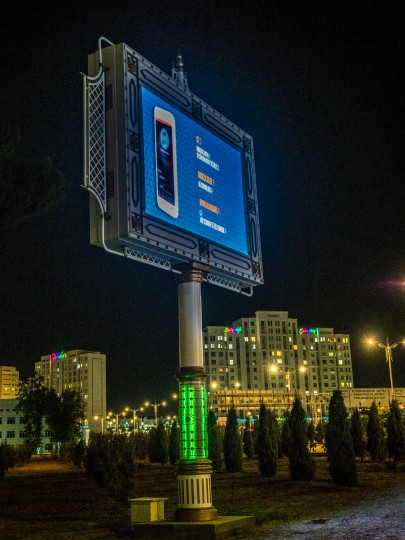
For a country that is just a regular dictatorship and not a "communist" one per se, the general absence of storefront signs or billboards of any type around town is weird and almost eery. You really notice their absence. The only advertisements around town are these very spread out electronic-type billboards. They flip between nationalist propaganda and ads for a few limited products: cellphones, cars, motor oil, local soft drinks

